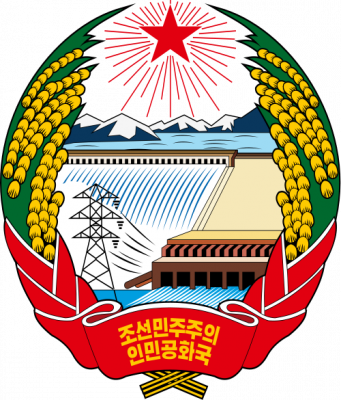
漢德百科全書 | 汉德百科全书
 Atomic bomb
Atomic bomb
 Atomic bomb
Atomic bomb
 Commonwealth of Nations
Commonwealth of Nations

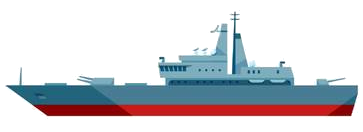
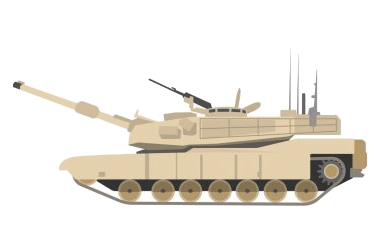
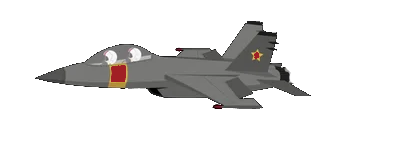
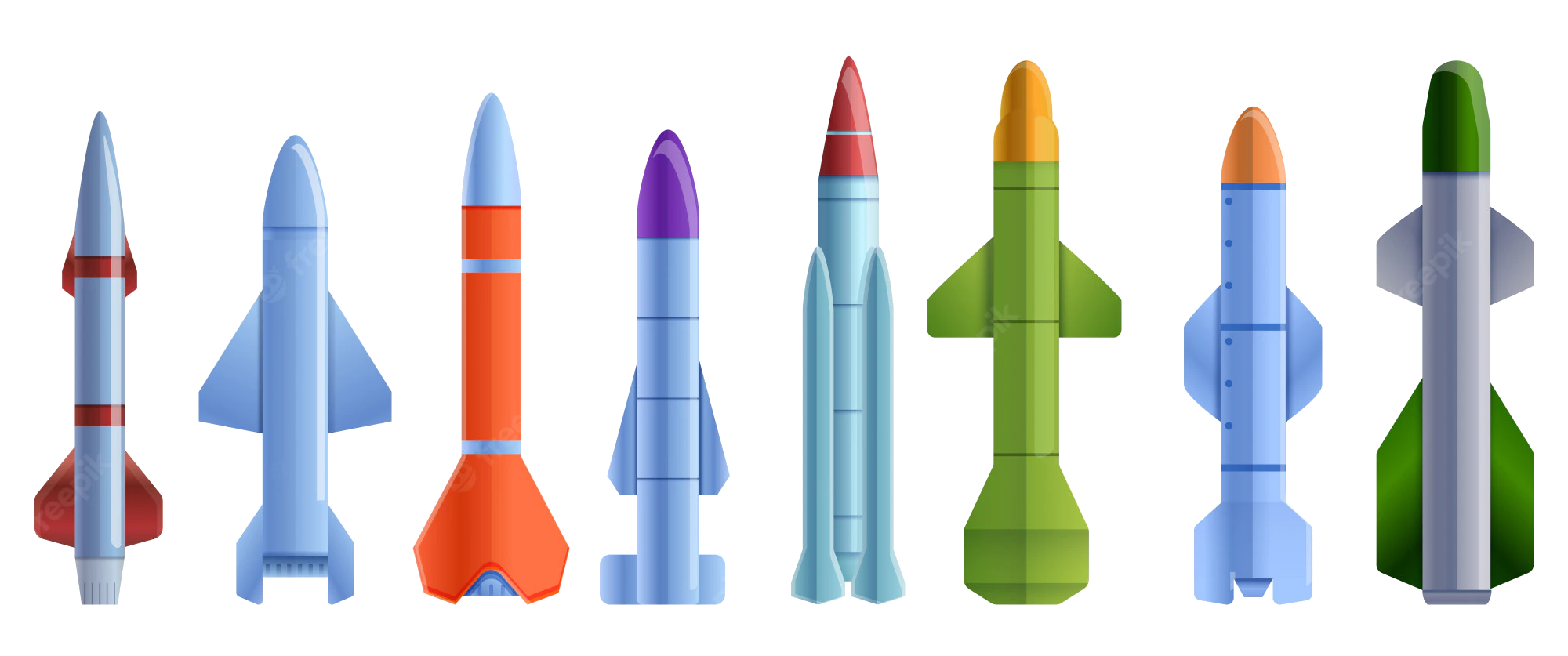 Military, defense and equipment
Military, defense and equipment
 Nuclear Weapon
Nuclear Weapon
 Pakistan
Pakistan
 Silk road
Silk road
 Shanghai Cooperation Organization
Shanghai Cooperation Organization

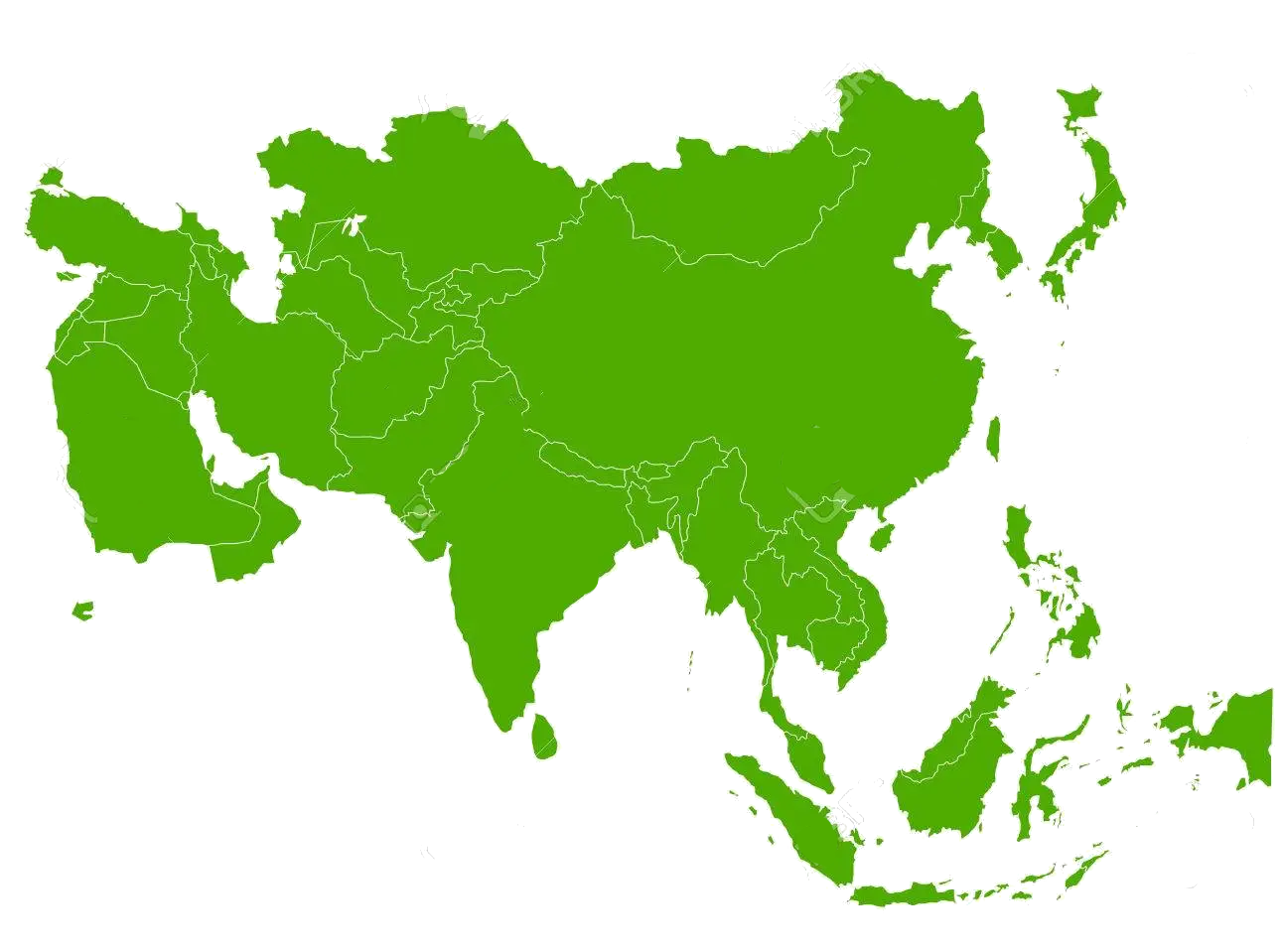 States of Asia
States of Asia
 Atomic bomb
Atomic bomb
 Democratic People's Republic of Korea
Democratic People's Republic of Korea




 Military, defense and equipment
Military, defense and equipment
 Nuclear Weapon
Nuclear Weapon
 Silk road
Silk road

 States of Asia
States of Asia
Die Demokratische Volksrepublik Korea, weithin Nordkorea genannt, ist ein Staat in Ostasien. Nordkorea umfasst den nördlichen Teil der koreanischen Halbinsel und ist nach dem Zusammenfall des Ostblocks einer der wenigen verbliebenen stalinistischen Staaten. Das Land wird diktatorisch regiert und gilt als das weltweit restriktivste politische System der Gegenwart.
Im Norden grenzt Nordkorea an die Volksrepublik China, im äußersten Nordosten an Russland. Nordkoreas Westgrenze bildet das Gelbe Meer, im Osten umgibt das Japanische Meer das Land. Im Süden bildet die demilitarisierte Zone die Grenze zu Südkorea (Republik Korea), das zusammen mit dem Norden bis zur Annexion Koreas durch Japan 1910 einen gemeinsamen Staat bildete. Die Teilung des Landes begann nach dem Zweiten Weltkrieg mit der Aufteilung Koreas in eine amerikanische und eine sowjetische Besatzungszone, aus denen 1948 zwei unabhängige Staaten hervorgingen. Der Koreakrieg (1950 bis 1953) besiegelte die Spaltung der koreanischen Halbinsel. (Quelle:http://de.wikipedia.org)
 *Track and field athletics
*Track and field athletics
 4x100 m Men
4x100 m Men
 *Track and field athletics
*Track and field athletics
 4x400 m Men
4x400 m Men
 Atomic bomb
Atomic bomb
 Commonwealth of Nations
Commonwealth of Nations

 Geography
Geography
 Leichtathletik-Weltmeisterschaften
Leichtathletik-Weltmeisterschaften
 2017 London
2017 London
 Leichtathletik-Weltmeisterschaften
Leichtathletik-Weltmeisterschaften
 1997 Athens
1997 Athens
 Leichtathletik-Weltmeisterschaften
Leichtathletik-Weltmeisterschaften
 1991 Tokyo
1991 Tokyo




 Military, defense and equipment
Military, defense and equipment
 Nuclear Weapon
Nuclear Weapon

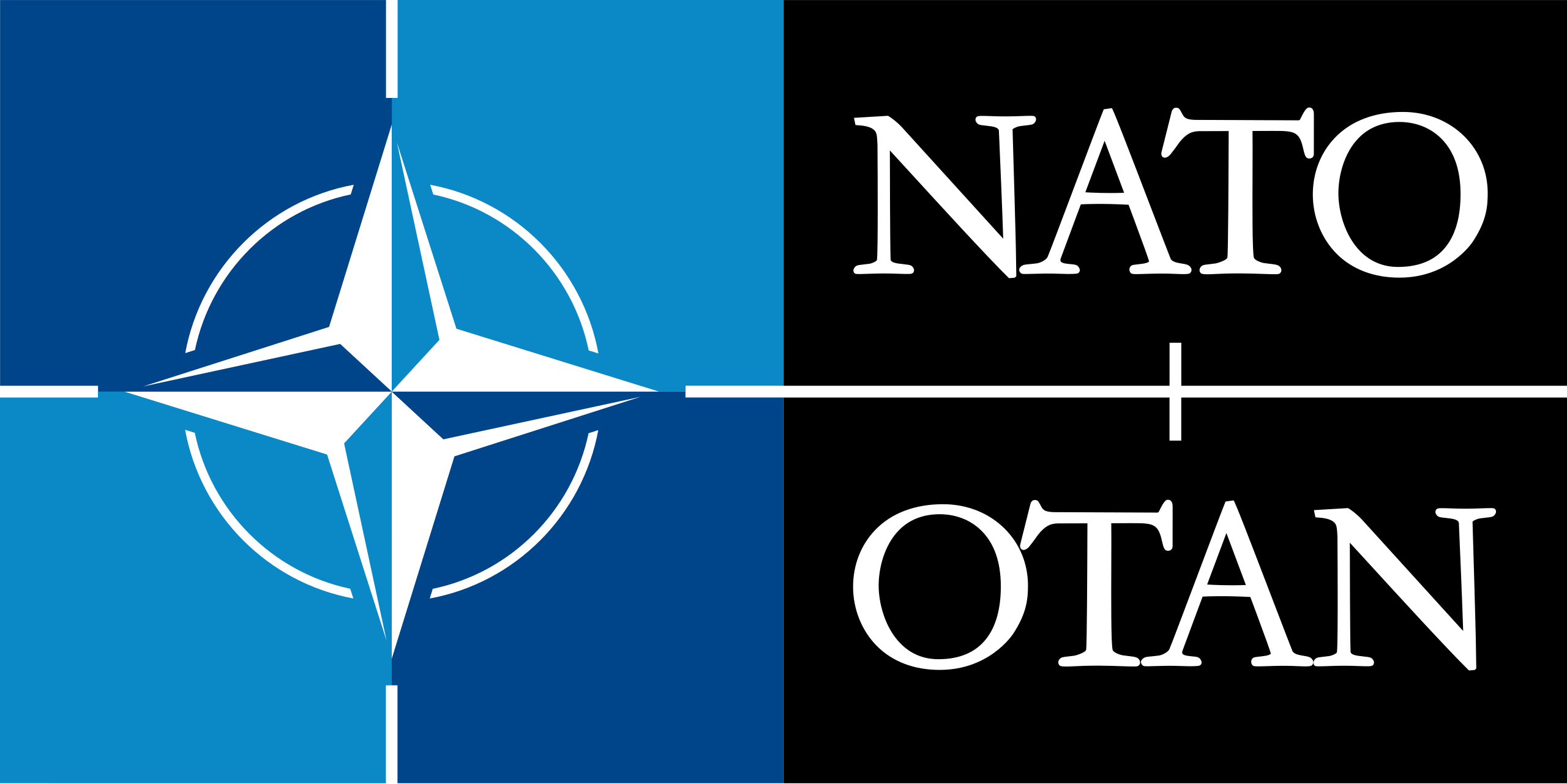 Mitglieder der NATO
Mitglieder der NATO

 Party and government
Party and government
 Group of the twenty most important industrial and emerging countries
Group of the twenty most important industrial and emerging countries

 Party and government
Party and government
 Group of Seven,G7
Group of Seven,G7

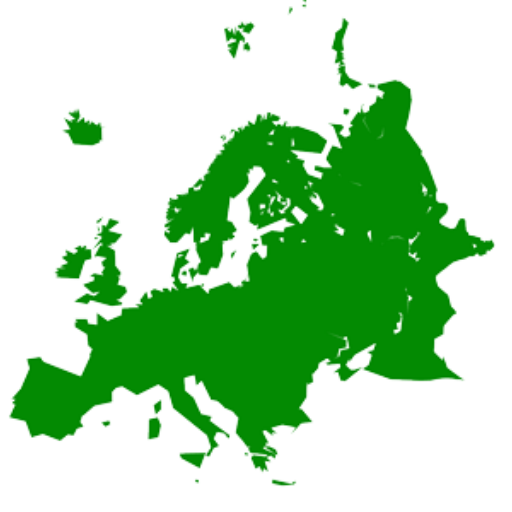 States of Europe
States of Europe

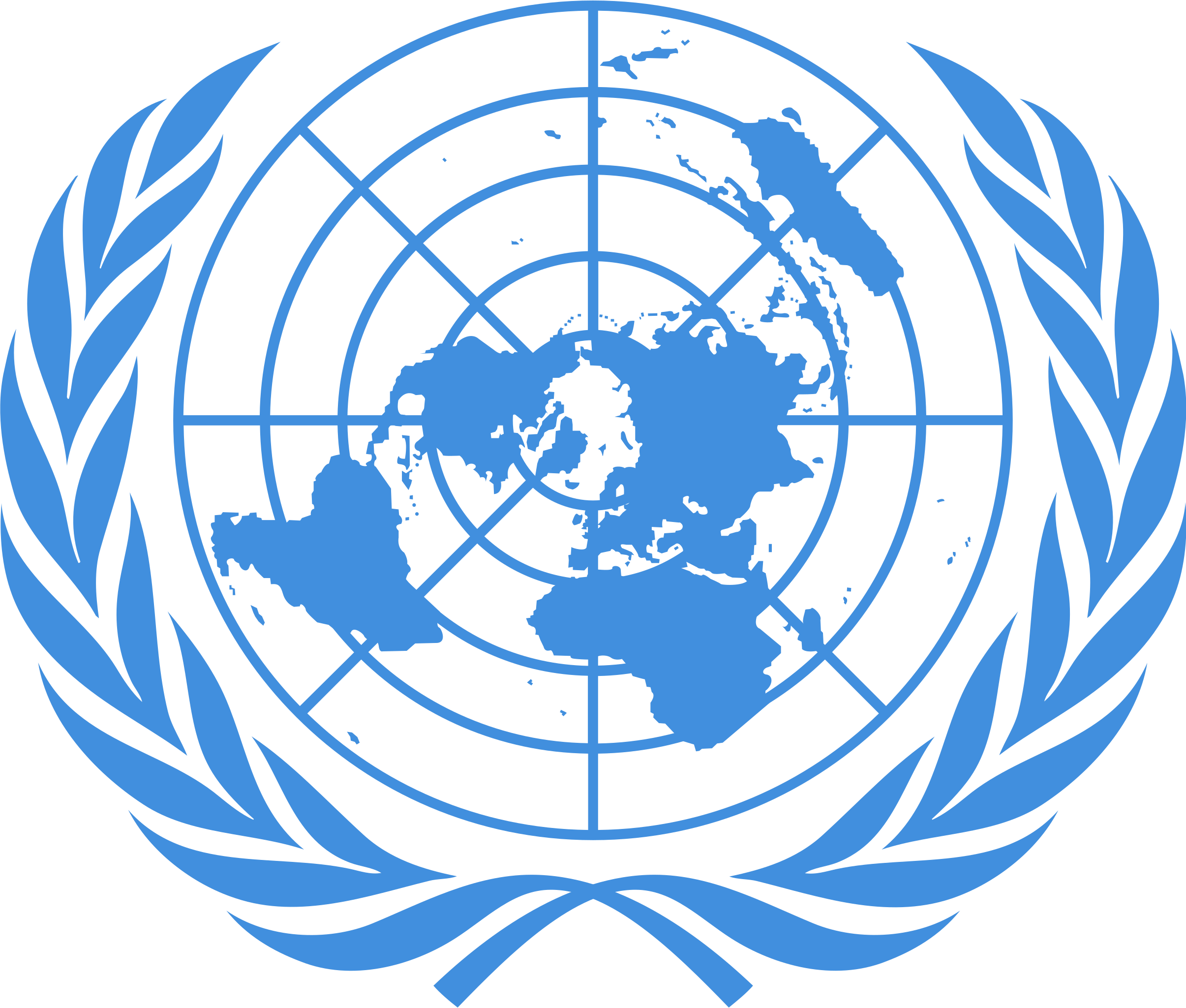 United Nations
United Nations
 United Nations Security Council
United Nations Security Council
 Hydrogen bomb
Hydrogen bomb

 Science and technology
Science and technology

 Science and technology
Science and technology
 The first industrial revolution and its leaders and followers
The first industrial revolution and its leaders and followers



Das Vereinigte Königreich von Großbritannien und Nordirland (englisch ), kurz Vereinigtes Königreich (englisch [juːˌnaɪ̯.tʰɪd ˈkʰɪŋ.dəm], internationale Abkürzung: UK oder GB), ist ein auf den Britischen Inseln vor der Nordwestküste Kontinentaleuropas gelegener europäischer Staat und bildet den größten Inselstaat Europas.
Das Vereinigte Königreich ist eine Union aus den vier Landesteilen England, Wales, Schottland und Nordirland. Im täglichen Sprachgebrauch wird es auch schlicht als Großbritannien oder England bezeichnet. Jedoch stellt England in der eigentlichen Bedeutung nur den größten Landesteil dar, während Großbritannien die Hauptinsel der Britischen Inseln mit den Landesteilen England, Schottland und Wales bezeichnet.
Mit rund 66,4 Millionen Einwohnern[6] steht das Vereinigte Königreich unter den bevölkerungsreichsten Staaten Europas nach Russland und Deutschland an dritter Stelle. Es ist Gründungsmitglied der NATO sowie der Vereinten Nationen. Es ist Atommacht, ständiges Mitglied des UN-Sicherheitsrates und einer der G7-Staaten. Von 1973 bis 2020 war es Mitglied der EWG bzw. später der Europäischen Union.
大不列颠及北爱尔兰联合王国(英语:United Kingdom of Great Britain and Northern Ireland),国际间的标准简称为联合王国(英语:United Kingdom,缩写作UK)或者不列颠(英语:Britain),汉字文化圈通称“英国”[注 5][9][10](中文早期亦称“英联王国”[注 6]),是本土位于西欧并具有海外领地[注 7]的主权国家。英国位于欧洲大陆西北面,由大不列颠岛、爱尔兰岛东北部分及一系列较小岛屿组成[11]。英国和另一国家唯一的陆上国境线位于北爱尔兰,和爱尔兰共和国相邻[注 8]。英国由大西洋所环绕,东为北海,南为英吉利海峡,西南偏南为凯尔特海,与爱尔兰隔爱尔兰海相望。该国总面积达243,610平方千米(94,060平方英里),为世界面积第80大的主权国家及欧洲面积第11大的主权国家,人口约6636万,为全球第21名及欧洲第3名。
英国为君主立宪制国家,采用议会制进行管辖[12][13]。其首都伦敦为全球城市A++级别城市和国际金融中心,大都会区人口达1380万,为欧洲第三大[14]。现任英国君主为女王伊丽莎白二世,1952年2月6日即位。英国由四个构成国组成,分别为英格兰、苏格兰、威尔士和北爱尔兰[15],其中后三者在权力下放体系之下,各自拥有一定的权力[16][17][18]。三地首府分别为爱丁堡、加的夫和贝尔法斯特。附近的马恩岛、根西行政区及泽西行政区并非联合王国的一部分,而为皇家属地,英国政府负责其国防及外交事务[19]。
英国的构成国之间的关系在历史上经历了一系列的发展。英格兰王国通过1535年和1542年的联合法令将威尔士纳入领土。1707年联合法令使英格兰王国和苏格兰王国共组大不列颠王国,1801年大不列颠王国和爱尔兰王国共组大不列颠及爱尔兰联合王国。1922年爱尔兰中南部26个郡(面积占整个爱尔兰的约六分之五)脱离英国组成爱尔兰自由邦(当今爱尔兰的前身),最终造就了当今的大不列颠及北爱尔兰联合王国[注 9]。大不列颠及北爱尔兰联合王国亦有14块海外领地[20],为往日帝国的遗留部分。大英帝国在1921年达到其巅峰,拥有全球22%的领土,是有史以来面积最大的帝国。英国在语言、文化和法律体系上对其前殖民地保留了一定的影响,因而吸引许多以前英联邦的移民前来居住。
英国为发达国家,以名义GDP为量度是世界第五大经济体,以购买力平价为量度是世界第九大经济体。英国是世界首个工业化国家,工业革命使英国人的生产力大大提高,商业与财富极大的增长,更凭借著工业时代的船坚炮利,1763年—1945年英国为世界第一强国,其鼎盛时期的19世纪还被称作英国的世纪[21][22],当今英国仍是世界强国之一,在经济、文化、军事、科技、教育和政治上均有全球性的显著影响力[23][24]。英国为国际公认的有核国家,其军事开支位列全球第五[25][26]。1945年以来英国即为联合国安全理事会常任理事国。1973年—2020年英国是欧洲联盟(EU)及其前身欧洲经济共同体(EEC)的成员国。英国还是英联邦、欧洲委员会、七国财长峰会、七国集团、二十国集团、北大西洋公约组织、经济合作与发展组织和世界贸易组织成员国。
グレートブリテン及び北アイルランド連合王国(グレートブリテンおよびきたアイルランドれんごうおうこく、英: United Kingdom of Great Britain and Northern Ireland: UK)は、ヨーロッパ大陸の北西岸に位置し、グレートブリテン島・アイルランド島北東部・その他多くの島々から成る立憲君主制国家。首都はロンドン。日本語における通称の一例としてイギリス、英国(えいこく)がある(→#国名)。
イングランド、ウェールズ、スコットランド、北アイルランドという歴史的経緯に基づく4つの「カントリー(国)」が、同君連合型の単一の主権国家を形成している[1]。しかし、政治制度上は単一国家の代表的なモデルであり、連邦国家ではない。
国際連合安全保障理事会常任理事国の一国(五大国)であり、G7・G20に参加する。GDPは世界10位以内に位置する巨大な市場を持ち、ヨーロッパにおける四つの大国「ビッグ4」の一国である。ウィーン体制が成立した1815年以来、世界で最も影響力のある国家を指す列強の一つに数えられる。また、民主主義、立憲君主制など近代国家の基本的な諸制度が発祥した国でもある。
イギリスの擬人化としてはジョン・ブル、ブリタニアが知られる。
The United Kingdom of Great Britain and Northern Ireland, commonly known as the United Kingdom (UK or U.K.)[14] or Britain,[note 10] is a sovereign country located off the northwestern coast of the European mainland. The United Kingdom includes the island of Great Britain, the northeastern part of the island of Ireland, and many smaller islands.[15] Northern Ireland shares a land border with the Republic of Ireland. Otherwise, the United Kingdom is surrounded by the Atlantic Ocean, with the North Sea to the east, the English Channel to the south and the Celtic Sea to the southwest, giving it the 12th-longest coastline in the world. The Irish Sea separates Great Britain and Ireland. The total area of the United Kingdom is 94,000 square miles (240,000 km2).
The United Kingdom is a unitary parliamentary democracy and constitutional monarchy.[note 11][16][17] The monarch is Queen Elizabeth II, who has reigned since 1952, making her the world's longest-serving current head of state.[18] The United Kingdom's capital is London, a global city and financial centre with an urban area population of 10.3 million.[19]
The United Kingdom consists of four countries: England, Scotland, Wales and Northern Ireland.[20] Their capitals are London, Edinburgh, Cardiff and Belfast, respectively. Apart from England, the countries have their own devolved governments,[21] each with varying powers.[22][23] Other major cities include Birmingham, Glasgow, Leeds, Liverpool, and Manchester.
The nearby Isle of Man, Bailiwick of Guernsey and Bailiwick of Jersey are not part of the UK, being Crown dependencies with the British Government responsible for defence and international representation.[24] The medieval conquest and subsequent annexation of Wales by the Kingdom of England, followed by the union between England and Scotland in 1707 to form the Kingdom of Great Britain, and the union in 1801 of Great Britain with the Kingdom of Ireland created the United Kingdom of Great Britain and Ireland. Five-sixths of Ireland seceded from the UK in 1922, leaving the present formulation of the United Kingdom of Great Britain and Northern Ireland. The UK's name was adopted in 1927 to reflect the change.[note 12] There are fourteen British Overseas Territories,[25] the remnants of the British Empire which, at its height in the 1920s, encompassed almost a quarter of the world's landmass and was the largest empire in history. British influence can be observed in the language, culture and political systems of many of its former colonies.[26][27][28][29][30] The United Kingdom has the world's sixth-largest economy by nominal gross domestic product (GDP), and the ninth-largest by purchasing power parity (PPP). It has a high-income economy and a very high human development index rating, ranking 14th in the world. It was the world's first industrialised country and the world's foremost power during the 19th and early 20th centuries.[31][32] The UK remains a great power, with considerable economic, cultural, military, scientific and political influence internationally.[33][34] It is a recognised nuclear weapons state and is sixth in military expenditure in the world.[35] It has been a permanent member of the United Nations Security Council since its first session in 1946.
The United Kingdom is a leading member of the Commonwealth of Nations, the Council of Europe, the G7, the G20, NATO, the Organisation for Economic Co-operation and Development (OECD), Interpol and the World Trade Organization (WTO). It was a member of the European Union (EU) and its predecessor, the European Economic Community (EEC), for 47 years, between 1 January 1973 and withdrawal on 31 January 2020.
Le Royaume-Uni (prononcé en français : /ʁwajom‿yni/a Écouter), en forme longue le Royaume-Uni de Grande-Bretagne et d'Irlande du Nordb (en anglais : United Kingdom /juːˌnaɪtɪd ˈkɪŋdəm/c Écouter et United Kingdom of Great Britain and Northern Ireland)d, est un pays d'Europe de l'Ouest, ou selon certaines définitions, d'Europe du Nord, dont le territoire comprend l'île de Grande-Bretagne et la partie nord de l'île d'Irlande, ainsi que de nombreuses petites îles autour de l'archipel. Le territoire du Royaume-Uni partage une frontière terrestre avec la république d'Irlande, et est entouré par l'océan Atlantique au nord, la mer du Nord à l'est, la Manche au sud, la mer Celtique au sud-sud-ouest, la mer d'Irlande au sud-ouest et les mers intérieures de la côte ouest de l'Écosse au nord-ouest. Le Royaume-Uni couvre une superficie de 246 690 km2, faisant de lui le 80e plus grand pays du monde, et le 11e d'Europe. Il est le 22e pays plus peuplé du monde, avec une population estimée à 65,1 millions d'habitants. Le Royaume-Uni est une monarchie constitutionnelle7 ; il possède un système parlementaire de gouvernance8,3. Sa capitale est Londres, une ville mondiale et la première place financière au monde.
Le Royaume-Uni est composé de quatre nations constitutives : l'Angleterre, l'Écosse, le pays de Galles et l'Irlande du Nord. Les trois dernières ont des administrations dévolues9, chacune avec des pouvoirs variés10, basés dans leurs capitales régionales, respectivement Édimbourg, Cardiff et Belfast. Les bailliages de Guernesey, de Jersey et l'île de Man sont des dépendances de la Couronne et ne sont donc pas rattachés au pays11. De plus, le pays comprend quatorze territoires d'outre-mer12, disséminés sur plusieurs océans. Le Royaume-Uni est né en 1707, lorsque les royaumes d'Angleterre et d'Écosse s'unifièrent pour former le royaume de Grande-Bretagne, qui s'agrandit en 1801 en s'unifiant avec le royaume d'Irlande pour former le Royaume-Uni de Grande-Bretagne et d'Irlande. En 1922, l'Irlande du Sud fit sécession du Royaume-Uni, donnant naissance à l'État d'Irlande, amenant au nom officiel et actuel de « Royaume-Uni de Grande-Bretagne et d'Irlande du Nord ». Les territoires d'outre-mer, anciennement des colonies, sont les vestiges de l'Empire britannique, qui, jusqu'à la seconde moitié du XXe siècle, était le plus vaste empire colonial de l'histoire.
L'influence britannique peut être observée dans la langue, la culture, le système politique et juridique des anciennes colonies. Le Royaume-Uni est un pays développé. Il est en 2018 la cinquième puissance mondiale par son PIB nominal13 et la neuvième puissance en termes de PIB à parité de pouvoir d'achat. Berceau de la révolution industrielle, le pays fut la première puissance mondiale durant la majeure partie du XIXe siècle14,15. Le Royaume-Uni reste une grande puissance, avec une influence internationale considérable sur le plan économique, politique, culturel, militaire et scientifique16,17. Il est également une puissance nucléaire reconnue avec le sixième budget de la défense le plus élevé18. Le Royaume-Uni est membre du Commonwealth, du Conseil de l'Europe, du G7, du G20, de l'OTAN, de l'OCDE, de l'OMC, et membre permanent du Conseil de sécurité des Nations unies depuis 1946. Le Royaume-Uni a adhéré le 1er janvier 1973 à la CEE, devenue Union Européenne, puis en est sorti le 1er février 2020 à la suite de la victoire du «
 *Track and field athletics
*Track and field athletics
 4x400 m Woman
4x400 m Woman
 *Track and field athletics
*Track and field athletics
 4x100 m Woman
4x100 m Woman
 Atomic bomb
Atomic bomb
 BRICS summit
BRICS summit

 History
History
 M 1500 - 2000 AD
M 1500 - 2000 AD

 History
History

 History
History
 N 2000 - 2100 AD
N 2000 - 2100 AD
 Leichtathletik-Weltmeisterschaften
Leichtathletik-Weltmeisterschaften
 2005 Helsinki
2005 Helsinki
 Leichtathletik-Weltmeisterschaften
Leichtathletik-Weltmeisterschaften
 1999 Seville
1999 Seville
 Leichtathletik-Weltmeisterschaften
Leichtathletik-Weltmeisterschaften
 1993 Stuttgart
1993 Stuttgart




 Military, defense and equipment
Military, defense and equipment
 Nuclear Weapon
Nuclear Weapon

 Party and government
Party and government
 Group of the twenty most important industrial and emerging countries
Group of the twenty most important industrial and emerging countries

 Party and government
Party and government
 BRICS
BRICS
 Russia
Russia
 Silk road
Silk road
 Shanghai Cooperation Organization
Shanghai Cooperation Organization

 States of Asia
States of Asia

 States of Europe
States of Europe

 United Nations
United Nations
 United Nations Security Council
United Nations Security Council
 Hydrogen bomb
Hydrogen bomb
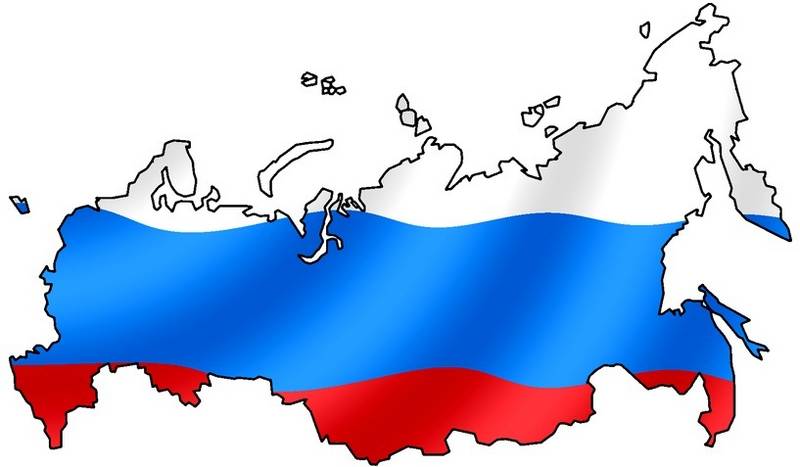
Russland (russisch Россия [rɐˈsʲijə] , Transkription Rossija) bzw. die Russische Föderation (oder der russischen Bezeichnung entsprechend Russländische Föderation; russisch Российская Федерация, , Transkription Rossijskaja Federazija)[9] ist ein souveräner, föderativer Staat im nordöstlichen Eurasien und mit etwa 17 Millionen Quadratkilometern flächenmäßig der größte Staat der Erde. Russland umfasst mehr als ein Achtel der bewohnten Landmasse der Erde und steht mit 144 Millionen Einwohnern (2017) an 9. Stelle der bevölkerungsreichsten Länder; es ist zugleich eines der am dünnsten besiedelten. Der europäische Teil des Staatsgebiets ist viel dichter besiedelt und verstädtert als der über dreimal so große asiatische Teil: Etwa 77 % der Bevölkerung (110 Millionen Einwohner) leben westlich des Urals. Die Hauptstadt Moskau ist eine der größten Städte und Metropolregionen der Welt; als weiteres wichtiges Zentrum gilt Sankt Petersburg, das zwischen 1712 und 1918 Hauptstadt war und eine Brücke für Kunst und Kultur aus Westeuropa bildete.
Die nächstgrößeren Millionenstädte Russlands sind Nowosibirsk in Sibirien, Jekaterinburg im Ural und Nischni Nowgorod an der Wolga. Weitere Großstadtregionen sind Tscheljabinsk, Ufa und Kasan.
Das heutige Russland entwickelte sich aus dem Großfürstentum Moskau, einem Teilfürstentum des früheren ostslawischen Reiches Kiewer Rus, zu einem über einhundert Ethnien zählenden Vielvölkerstaat, wobei ethnische Russen heute fast 80 Prozent der Bevölkerung ausmachen. Die föderale Gliederung Russlands besteht aus acht Föderationskreisen und 85 Föderationssubjekten.
Die Russische Föderation ist „Fortsetzerstaat“[10] der Sowjetunion in internationalen Organisationen, Atommacht und ständiges Mitglied des Weltsicherheitsrates. Nach der Erholung von der postkommunistischen Transformationskrise der 1990er Jahre wurde Russland die nach Kaufkraftparität sechstgrößte Volkswirtschaft der Welt, zwischen Deutschland und Brasilien (Schätzung für 2016).[11]
Russlands Rohstoffreserven sind mit etwa 20 bis 30 % die wahrscheinlich größten der Welt,[12][13][14] mit erheblichen Vorkommen von Primärenergieträgern, vor allem Erdgas.
Russland gehört zu den anerkannten Nuklearmächten und besitzt das weltgrößte Arsenal an Massenvernichtungswaffen. Russland ist Großmacht und Regionalmacht und wird teilweise als potentielle Supermacht betrachtet.[15] Es ist ständiges Mitglied im Sicherheitsrat der Vereinten Nationen, G 20-Mitglied, Mitglied des Europarates, der APEC, der Shanghaier Organisation für Zusammenarbeit (SCO), der OSCE, der WTO; es ist führendes Mitglied in der Gemeinschaft Unabhängiger Staaten (GUS), der Organisation des Vertrags über kollektive Sicherheit (OVKS) und der Eurasischen Wirtschaftsunion (mit Armenien, Kasachstan, Kirgisistan und Weißrussland).
Russland ist ein Schwellenland im Bereich des oberen mittleren Einkommens.[16] Im Human Development Index der Vereinten Nationen stand Russland 2016 mit 0,8 (von 1) auf Platz 49,[17] der Gini-Koeffizient lag bei 37,7.
Das Regierungssystem Russlands wird von Politikwissenschaftlern entsprechend dem Wortlaut der Verfassung meist formal als Verbindung präsidentieller und parlamentarischer Formen eingeordnet; die Verfassungswirklichkeit des politischen Systems entspricht jedoch eher den Modellen defekter Demokratien oder der Postdemokratie, zumal der Präsident fast autokratische Macht ausübt.[18][19][20] Für die politische Ordnung wird in Russland gelegentlich von offizieller Seite der Begriff „Gelenkte Demokratie“ im affirmativen Sinne gebraucht.[21]
Die Annexion der Krim im März 2014 belastet die Beziehungen zwischen Russland und dem Westen. Der russischen Regierung wird vorgeworfen, die europäische Friedensordnung zu verletzen.[22]
Das Land war 2016 mit 69,9 Mrd. Dollar für 4,1 % der weltweiten Militärausgaben verantwortlich und liegt damit im internationalen Vergleich hinter den Vereinigten Staaten mit 611 Mrd. Dollar (36 %) und China mit 215 Mrd. Dollar (13 %) auf Platz 3, gefolgt von Saudi-Arabien und Indien.[23][24]
俄罗斯联邦[9](俄语:Российская Федерация,缩写为РФ),通称俄罗斯(Россия)[10],是位于欧亚大陆北部的联邦共和国,国土横跨欧亚两大洲,为世界上土地面积最大的国家,拥有1709万平方公里的面积,占地球陆地面积八分之一[11][12];它也是世界上第九大人口国家,拥有1.4亿人口,77%居住于其较为发达的欧洲部分。俄罗斯国土覆盖整个亚洲北部及东欧大部,横跨11个时区,涵盖广泛的环境和地形。拥有全世界最大的森林储备和含有约世界四分之一的淡水的湖泊[13]。俄罗斯有十四个陆上邻国(从西北方向起逆时针序):挪威、芬兰、爱沙尼亚、拉脱维亚、立陶宛、波兰、白俄罗斯、乌克兰、格鲁吉亚、阿塞拜疆、哈萨克斯坦、中国、蒙古和朝鲜(其中立陶宛和波兰仅与俄罗斯外飞地加里宁格勒州接壤),另外与阿布哈兹和南奥塞梯两个只有俄罗斯承认的非联合国会员国接壤。同时,俄罗斯还与日本、美国、加拿大、格陵兰(丹麦)、冰岛、瑞典、土耳其隔海相望。俄罗斯北部和东部分别为北冰洋和太平洋包围,西北和西南则分别可经由波罗的海和黑海通往大西洋。
俄罗斯历史始于欧洲的东斯拉夫民族,聚集区域自公元3世纪至8世纪逐渐扩大[14]。在9世纪,源自北欧的瓦良格人武士精英建立了基辅罗斯这个中世纪国家并开始统治。公元988年,国家从拜占庭帝国采纳了东正教会,随后由此开始,千年拜占庭与斯拉夫文化的融合成为了今日的俄罗斯文化[15]。基辅罗斯最终解散分化为众多公国,被蒙古人逐一击破,并均在13世纪成为了金帐汗国的一部分。莫斯科大公自14世纪起逐渐崛起并统一周边俄罗斯诸侯国,在15世纪成功从金帐汗国独立,且成为了基辅罗斯文化和政治的继承者。16世纪起伊凡四世自称沙皇,自诩“第三罗马”。在18世纪,俄罗斯沙皇国通过征服、吞并和探索而扩张。彼得一世称帝成立了俄罗斯帝国,最终成为史上领土第三大帝国,疆域最大曾自中欧的波兰连绵至北美的阿拉斯加[16][17]。
1917年俄国革命后,俄罗斯苏维埃联邦社会主义共和国成为了世界上第一个宪法意义上的社会主义国家[18],并成为随后成立的苏维埃社会主义共和国联盟的主体和其最大的加盟共和国。二战时期,苏联为同盟国的胜利扮演了决定性的角色。在战后其崛起成为公认的超级大国,并在冷战时期与美国互相竞争。苏联时期产生了20世纪的许多最重要的科技成就,其中包括世界第一颗人造地球卫星,以及首次将人类送入太空。在1990年,苏联为世界上第二大经济体[19],且拥有世界上最多的常备军人以及最多的大规模杀伤性武器库存。1991年苏联解体后,包括俄罗斯在内的15个共和国从原苏联独立;身为原苏联最大的加盟共和国,俄罗斯通过修宪改制为俄罗斯联邦,成为原苏联的唯一法理继承国家,政体采用联邦制、民主共和制及半总统制。
截至2015年,俄罗斯根据国民生产总值为世界第13大经济体,根据购买力平价为世界第六大经济体。俄罗斯拥有世界上最大储量的矿产和能源资源[20],是世界上最大的石油和天然气输出国[21][22]。俄罗斯为世界大国之一,为认定的拥核国家,联合国安理会常任理事国,G20、欧洲理事会、亚太经合组织、上合组织、欧安组织、世贸组织和金砖国家成员。它也是独联体、集体安全条约组织的领导者和欧亚经济联盟创始成员。俄罗斯亦是世界八大工业国之一。
ロシア連邦(ロシアれんぽう、ロシア語: Российская Федерация:英語名 Russian Federation)、またはロシア (Россия) は、ユーラシア大陸北部にある共和制及び連邦制国家。
地理的にロシアの国境は、北西から南東へ、ノルウェー、フィンランド、エストニア、ラトビア、リトアニアおよびポーランド(ともにカリーニングラード州と隣接)、ベラルーシ、ウクライナ、ジョージア、アゼルバイジャン、カザフスタン、中華人民共和国、モンゴル国、朝鮮民主主義人民共和国と接する。海上境界線としては、日本とはオホーツク海・宗谷海峡・根室海峡・珸瑤瑁水道、アメリカ合衆国とはベーリング海峡でアラスカ州と接する。ロシアの面積は17,075,400km2で世界最大であり、地球上の居住地域の8分の1を占める。2012年時点で、ロシアの人口は1億4300万人で世界第9位である[3]。国土は北アジア全体および東ヨーロッパの大部分に広がることに伴い、ロシアは11の標準時を有し、広範な環境および地形を包含する。
ロシアの歴史は、3世紀から8世紀までの間にヨーロッパで認識され始めた東スラヴ人の歴史に始まる[4]。9世紀、ヴァリャーグの戦士の精鋭およびその子孫により設立及び統治されて、キエフ大公国の中世国家が誕生した。988年、東ローマ帝国から正教会を導入し、次の千年紀のロシア文化を特徴付ける東ローマ帝国およびスラブ人の文化の統合が始まった[5]。キエフ大公国は最終的には多くの国に分裂し、キエフ大公国の領土の大部分はモンゴルに制圧され、遊牧国家ジョチ・ウルスの属国になった[6]。モスクワ大公国は次第に周辺のロシアの公国を再統合し、ジョチ・ウルスからの独立を獲得し、キエフ大公国の文化的および政治的な遺産を支配するようになった。18世紀までにモスクワ大公国は、王朝による征服・併合、シェレホフ提督による探検を通じ、史上第3位の大帝国であるロシア帝国となり、版図がポーランドから北米のアラスカまで広がった[7][8]。
しかし帝国は国土に見合う開発資金を国内で捻出することができなかった。サンクトペテルブルクの貿易為替銀行にドイツ銀行を参加させたが、露仏同盟を結んで以来国際金融市場から外資が雪崩れ込むようになった。
ロシア革命後、ロシア・ソビエト連邦社会主義共和国がソビエト連邦最大かつ指導的な構成国となり、世界初の憲法上の社会主義国および広く認められた超大国となり[9]、第二次世界大戦において連合国の勝利に決定的な役割を果たした[10][11]。ソビエト時代には、世界初の人工衛星および世界初の有人宇宙飛行を含む20世紀の最も重要な複数の技術的偉業を経験した。1991年のソ連崩壊後、ロシア・ソビエト連邦社会主義共和国は自らをロシア連邦として再構成し、連邦国家の継続的な法人格として認識されている。ソ連政府は国民にあまねく賃貸住宅を配分していたが、それらを建設するだけで巨額の財政負担となっており、財政再建中のロシア連邦がリフォームすることなどかなわず、無償で住民が物件を取得できるようにしてしまい急激な私有化を進めた[12]。私有化されていないものは地方自治体への譲渡が進んで、人口減少社会となる中、若者向けに低家賃で貸し出されている[12]。
1996年11月、ロシアは第一回だけで10億ドルのユーロ債を起債した[13]。それまでの累積ユーロ債発行額は160億ドルほどに達した[13]。1997年、第一回サンクトペテルブルク国際経済会議が開かれた。1998年、ロシア財政危機。1999年、ロスチャイルド代理人のアルフレッド・ハルトマン博士が資金洗浄の国内捜査線上で名前をとりあげられた。
2003年、ミハイル・ホドルコフスキーが脱税などの罪で逮捕・起訴され、ユコスの社長を辞任した。シブネフチとの合併が取り消されるなどして株価が乱高下し、内部者取引が横行した。2005年でロシアの住宅私有化率は63%に達し[12]、国際的な不動産価格の下落へつながっていった。2007年、ホドルコフスキーを除くユコス株主らは、ロシア政府がユコスを破綻させたとしてハーグの常設仲裁裁判所へ提訴した(ユコス破綻事件)。2010年6月26日、政府側のロスネフチに賠償命令が出た。7月27日、内部者取引と株価操作を取り締まる法案がようやく批准された[14]。これは翌年から施行された。
2014年ウクライナ騒乱が2月に起きてVTBが態度を硬化させた。7月、ユコス破綻事件で政府は19億ユーロの賠償金支払いを命じられていたが、12月に欧州人権裁判所が政府の上訴を棄却した[15]。2016年4月、ハーグ地区裁判所が、ロシア政府に株主らへ500億ドルの賠償金支払いを命じた常設仲裁裁判所の判決を棄却した[16]。
2014年時点で、ロシアの経済は名目GDPで世界第9位かつ購買力平価で世界第6位であった[17]。ロシアの豊富な鉱物およびエネルギー資源は世界最大の埋蔵量であり[18]、世界最大の原油生産国および世界最大の天然ガス生産国の一つである。ロシアは核保有を認められた5大国の一つであり、世界最大の大量破壊兵器保有量がある。ロシアは列強および国際連合安全保障理事会常任理事国であり、独立国家共同体の指導国であるだけでなく、G20、欧州評議会、アジア太平洋経済協力、上海協力機構、ユーラシア経済共同体、欧州安全保障協力機構 (OSCE)、世界貿易機関 (WTO) 加盟国である。
Russia (Russian: Росси́я, tr. Rossiya, IPA: [rɐˈsʲijə]), officially the Russian Federation[12] (Russian: Росси́йская Федера́ция, tr. Rossiyskaya Federatsiya, IPA: [rɐˈsʲijskəjə fʲɪdʲɪˈratsɨjə]), is a transcontinental country in Eastern Europe and North Asia.[13] At 17,125,200 square kilometres (6,612,100 sq mi),[14] Russia is the largest country in the world by area, covering more than one-eighth of the Earth's inhabited land area,[15][16][17] and the ninth most populous, with about 146.77 million people as of 2019, excluding Crimea.[8] About 77% of the population live in the western, European part of the country. Russia's capital, Moscow, is the largest metropolitan area in Europe proper[18] and one of the largest cities in the world; other major cities include Saint Petersburg, Novosibirsk, Yekaterinburg and Nizhny Novgorod. Extending across the entirety of Northern Asia and much of Eastern Europe, Russia spans eleven time zones and incorporates a wide range of environments and landforms. From northwest to southeast, Russia shares land borders with Norway, Finland, Estonia, Latvia, Lithuania and Poland (both with Kaliningrad Oblast), Belarus, Ukraine, Georgia, Azerbaijan, Kazakhstan, China, Mongolia and North Korea. It shares maritime borders with Japan by the Sea of Okhotsk and the U.S. state of Alaska across the Bering Strait. However, Russia recognises two more countries that border it, Abkhazia and South Ossetia, both of which are internationally recognized as parts of Georgia.
The East Slavs emerged as a recognizable group in Europe between the 3rd and 8th centuries AD.[19] Founded and ruled by a Varangian warrior elite and their descendants, the medieval state of Rus arose in the 9th century. In 988 it adopted Orthodox Christianity from the Byzantine Empire,[20] beginning the synthesis of Byzantine and Slavic cultures that defined Russian culture for the next millennium.[20] Rus' ultimately disintegrated into a number of smaller states; most of the Rus
 *Track and field athletics
*Track and field athletics
 4x100 m Men
4x100 m Men
 *Track and field athletics
*Track and field athletics
 4x100 m Woman
4x100 m Woman
 *Track and field athletics
*Track and field athletics
 4x400 m Men
4x400 m Men
 Atomic bomb
Atomic bomb

 European Union
European Union
 History of the European Union
History of the European Union

 European Union
European Union
 *Founding states
*Founding states
 France
France

 Geography
Geography
 Leichtathletik-Weltmeisterschaften
Leichtathletik-Weltmeisterschaften
 2005 Helsinki
2005 Helsinki
 Leichtathletik-Weltmeisterschaften
Leichtathletik-Weltmeisterschaften
 2003 Saint-Denis
2003 Saint-Denis
 Leichtathletik-Weltmeisterschaften
Leichtathletik-Weltmeisterschaften
 2003 Saint-Denis
2003 Saint-Denis




 Military, defense and equipment
Military, defense and equipment
 Nuclear Weapon
Nuclear Weapon

 Mitglieder der NATO
Mitglieder der NATO

 Party and government
Party and government
 Group of the twenty most important industrial and emerging countries
Group of the twenty most important industrial and emerging countries

 Party and government
Party and government
 Group of Seven,G7
Group of Seven,G7

 States of Europe
States of Europe

 United Nations
United Nations
 United Nations Security Council
United Nations Security Council
 Hydrogen bomb
Hydrogen bomb

Frankreich ![]() [ˈfʁaŋkʁaɪ̯ç] (französisch [fʁɑ̃s], amtlich République française [ʁe.py.ˈblik fʁɑ̃.ˈsɛz], deutsch Französische Republik) ist ein demokratischer, interkontinentaler Einheitsstaat in Westeuropa mit Überseeinseln und -gebieten auf mehreren Kontinenten. Metropolitan-Frankreich, d. h. der europäische Teil des Staatsgebietes, erstreckt sich vom Mittelmeer bis zum Ärmelkanal und zur Nordsee sowie vom Rhein bis zum Atlantischen Ozean. Sein Festland wird wegen seiner Landesform als Hexagone (Sechseck) bezeichnet. Frankreich ist flächenmäßig das größte und nach Einwohnern (hinter Deutschland) das zweitgrößte Land der Europäischen Union. Es umfasst (nach Russland und der Ukraine) das drittgrößte Staatsgebiet in Europa. Paris ist die Hauptstadt und als Agglomeration mit dem Gemeindeverband Métropole du Grand Paris und den umliegenden Gebieten der Region Île-de-France größter Ballungsraum des Landes vor Lyon, Marseille, Toulouse und Lille.
[ˈfʁaŋkʁaɪ̯ç] (französisch [fʁɑ̃s], amtlich République française [ʁe.py.ˈblik fʁɑ̃.ˈsɛz], deutsch Französische Republik) ist ein demokratischer, interkontinentaler Einheitsstaat in Westeuropa mit Überseeinseln und -gebieten auf mehreren Kontinenten. Metropolitan-Frankreich, d. h. der europäische Teil des Staatsgebietes, erstreckt sich vom Mittelmeer bis zum Ärmelkanal und zur Nordsee sowie vom Rhein bis zum Atlantischen Ozean. Sein Festland wird wegen seiner Landesform als Hexagone (Sechseck) bezeichnet. Frankreich ist flächenmäßig das größte und nach Einwohnern (hinter Deutschland) das zweitgrößte Land der Europäischen Union. Es umfasst (nach Russland und der Ukraine) das drittgrößte Staatsgebiet in Europa. Paris ist die Hauptstadt und als Agglomeration mit dem Gemeindeverband Métropole du Grand Paris und den umliegenden Gebieten der Region Île-de-France größter Ballungsraum des Landes vor Lyon, Marseille, Toulouse und Lille.
Im 17. und 18. Jahrhundert hatte Frankreich eine europäische Führungsrolle und Vormachtstellung inne. Bedeutend war die politische und kulturelle Ausstrahlung: Die Hofhaltung Ludwigs XIV. wurde zum Vorbild absolutistischer Staaten in ganz Europa und die Französische Revolution mit der Erklärung der Menschen- und Bürgerrechte gab zusammen mit Okkupationen durch Napoleon Bonaparte in vielen Ländern den Auftakt zu der immer wieder von Rückschlägen unterbrochenen Entwicklung zur Demokratie. In Übersee baute Frankreich zweimal ein Kolonialreich auf. Das erste umfasste u. a. große Teile Nordamerikas und ging großenteils Mitte des 18. Jahrhunderts im Siebenjährigen Krieg verloren; das zweite mit Schwerpunkt in Afrika war im 19. und frühen 20. Jahrhundert das zweitgrößte der Welt. Im 21. Jahrhundert gilt Frankreich mit Deutschland als treibende Kraft der europäischen Integration.
Die Französische Republik wird in ihrer Verfassung als unteilbar, laizistisch, demokratisch und sozial erklärt.[7] Ihr Grundsatz lautet: „Regierung des Volkes durch das Volk und für das Volk“. Frankreich steht auf Rang 26 des Index der menschlichen Entwicklung (2019) der Vereinten Nationen.[8] Gemessen am nominalen Bruttoinlandsprodukt ist es die sechstgrößte Volkswirtschaft der Welt.[5] Die Kaufkraft pro Einwohner betrug 2016 19.254 Euro (zum Vergleich: Deutschland 21.879 Euro, Großbritannien 21.141 Euro).[9] Lebensstandard, Bildungsgrad und durchschnittliche Lebenserwartung[10] gelten als hoch. Als meistbesuchtes Land der Welt empfängt Frankreich rund 83 Millionen ausländische Touristen pro Jahr.[11][12]
Frankreich unterhält die drittstärksten Streitkräfte innerhalb der NATO und das größte Heer der Europäischen Union. Es ist eines der fünf ständigen Mitglieder des UN-Sicherheitsrates und hatte 2010 als Atommacht die weltweit dritthöchste Anzahl an Kernwaffen.[13] Das Land ist Gründungsmitglied der Europäischen Union und der Vereinten Nationen, Mitglied der Frankophonie, der G7, der G20, der NATO, der Organisation für wirtschaftliche Zusammenarbeit und Entwicklung (OECD), der Welthandelsorganisation (WTO) und der Lateinischen Union.
法兰西共和国(法语:République française [ʁepyblik fʁɑ̃sɛz]),通称法国(法语:France [fʁɑ̃s] ![]() 聆听),是本土位于西欧并具有海外大区及领地[注 16]的主权国家,自法兰西第五共和国建立以来实行单一制与半总统制,首都为欧洲大陆最大的文化与金融中心巴黎。该国本土由地中海一直延伸至英吉利海峡及北海,并由莱茵河一直延伸至大西洋,整体呈六角状。海外领土包括南美洲的法属圭亚那及分布于大西洋、太平洋和印度洋的诸岛屿。全国共分为18个大区,其中5个位于海外。法国与西班牙及摩洛哥为同时拥有地中海及大西洋海岸线的三个国家。法国的国土面积全球第四十一位,但却为欧盟及西欧国土面积最辽阔的国家,欧洲面积第三大国家。
聆听),是本土位于西欧并具有海外大区及领地[注 16]的主权国家,自法兰西第五共和国建立以来实行单一制与半总统制,首都为欧洲大陆最大的文化与金融中心巴黎。该国本土由地中海一直延伸至英吉利海峡及北海,并由莱茵河一直延伸至大西洋,整体呈六角状。海外领土包括南美洲的法属圭亚那及分布于大西洋、太平洋和印度洋的诸岛屿。全国共分为18个大区,其中5个位于海外。法国与西班牙及摩洛哥为同时拥有地中海及大西洋海岸线的三个国家。法国的国土面积全球第四十一位,但却为欧盟及西欧国土面积最辽阔的国家,欧洲面积第三大国家。
今日之法国本土于铁器时代由高卢人(凯尔特人的一支)征服,前51年又由罗马帝国吞并。486年法兰克人(日耳曼人的一支)又征服此地,其于该地域建立的早期国家最终发展成为法兰西王国。法国至中世纪末期起成为欧洲大国,国力于19-20世纪时达致巅峰,建立了世界第二大殖民帝国,亦为20世纪人口最稠密的国家[来源请求],现今则是众多前殖民地的首选移民国[8]。在漫长的历史中,法国培养了不少对人类发展影响深远的著名哲学家、文学家与科学家,亦为文化大国,具有第四多的世界遗产[9]。
フランス共和国(フランスきょうわこく、フランス語: République française、通称:フランス、France)は、西ヨーロッパ、カリブ、太平洋およびインド洋に位置する共和制国家。首都はパリ。
フランス・メトロポリテーヌ(本土)は地中海からイギリス海峡及び北海へ、ライン川から大西洋へと広がる。この他世界各地に海外地域および領土を有する。
なお、フランス・メトロポリテーヌ周辺は北東がドイツとベルギーとルクセンブルク、東をスイスとイタリア、南にスペインと国境を接している。
フランスは国際連合安全保障理事会常任理事国であり、G7・G20、欧州評議会、世界貿易機関、経済協力開発機構、北大西洋条約機構、パリクラブおよびフランコフォニー国際機関における主要なメンバーである。国際政治においてはこれらの理由から、政治・経済・文化において強力な影響を及ぼす列強の一角に数えられており、ヨーロッパにおける「ビッグ4」の1つでもある。
核拡散防止条約により核兵器の保有を認められた5つの公式核保有国の1つであり、その他にアメリカ合衆国を除けば世界で唯一の原子力空母「シャルル・ド・ゴール」や原子力潜水艦を保有しており、強力な軍事力を持っている。
GDPは名目GDP世界第7位かつ購買力平価で世界第10位・ユーロ圏ではドイツに次ぐ第2位の経済力を有する国であり、高い人間開発指数を持つ先進国として知られる。数多くの世界遺産を抱えており、世界で最も観光客の多い国の1つである。
歴史的にはデカルト、モンテスキュー、ルソー、サルトルといった哲学者やマリ・キュリー、パストゥールといった科学者、モネ、セザンヌ、ゴーギャン、クールベ、ドラクロワといった芸術家の故国もしくは活躍の舞台であり、また百年戦争やフランス革命、ナポレオン戦争といった歴史的事象の主要な舞台であった。
France (French: [fʁɑ̃s] ![]() ), officially the French Republic (French: République française),[1] is a transcontinental country spanning Western Europe and overseas regions and territories in the Americas and the Atlantic, Pacific and Indian Oceans.[XIII] Including all of its territories, France has twelve time zones, the most of any country. Its metropolitan area extends from the Rhine to the Atlantic Ocean and from the Mediterranean Sea to the English Channel and the North Sea; overseas territories include French Guiana in South America, Saint Pierre and Miquelon in the North Atlantic, the French West Indies, and several islands in Oceania and the Indian Ocean. Due to its several coastal territories, France has the largest exclusive economic zone in the world. France borders Belgium, Luxembourg, Germany, Switzerland, Monaco, Italy, Andorra and Spain in Europe, as well as the Netherlands, Suriname and Brazil in the Americas. Its eighteen integral regions (five of which are overseas) span a combined area of 643,801 km2 (248,573 sq mi) and over 67 million people (as of May 2021).[13] France is a unitary semi-presidential republic with its capital in Paris, the country's largest city and main cultural and commercial centre; other major urban areas include Lyon, Marseille, Toulouse, Bordeaux, Lille and Nice.
), officially the French Republic (French: République française),[1] is a transcontinental country spanning Western Europe and overseas regions and territories in the Americas and the Atlantic, Pacific and Indian Oceans.[XIII] Including all of its territories, France has twelve time zones, the most of any country. Its metropolitan area extends from the Rhine to the Atlantic Ocean and from the Mediterranean Sea to the English Channel and the North Sea; overseas territories include French Guiana in South America, Saint Pierre and Miquelon in the North Atlantic, the French West Indies, and several islands in Oceania and the Indian Ocean. Due to its several coastal territories, France has the largest exclusive economic zone in the world. France borders Belgium, Luxembourg, Germany, Switzerland, Monaco, Italy, Andorra and Spain in Europe, as well as the Netherlands, Suriname and Brazil in the Americas. Its eighteen integral regions (five of which are overseas) span a combined area of 643,801 km2 (248,573 sq mi) and over 67 million people (as of May 2021).[13] France is a unitary semi-presidential republic with its capital in Paris, the country's largest city and main cultural and commercial centre; other major urban areas include Lyon, Marseille, Toulouse, Bordeaux, Lille and Nice.
Inhabited since the Palaeolithic era, the territory of Metropolitan France was settled by Celtic tribes known as Gauls during the Iron Age. Rome annexed the area in 51 BC, leading to a distinct Gallo-Roman culture that laid the foundation of the French language. The Germanic Franks arrived in 476 and formed the Kingdom of Francia, which became the heartland of the Carolingian Empire. The Treaty of Verdun of 843 partitioned the empire, with West Francia becoming the Kingdom of France in 987.
In the High Middle Ages, France was a powerful but highly decentralised feudal kingdom in which the king's authority was barely felt. King Philip II achieved remarkable success in the strengthening of royal power and the expansion of his realm, defeating his rivals and doubling its size. By the end of his reign, the kingdom had emerged as the most powerful state in Europe. From the mid-14th to the mid-15th century, France was plunged into a series of dynastic conflicts for the French throne, collectively known as the Hundred Years' War, and a distinct French identity emerged as a result. The French Renaissance saw art and culture flourish, various wars with rival powers, and the establishment of a global colonial empire, which by the 20th century would become the second-largest in the world.[14] The second half of the 16th century was dominated by religious civil wars between Catholics and Huguenots that severely weakened the country. But France once again emerged as Europe's dominant cultural, political and military power in the 17th century under Louis XIV following the Thirty Years' War.[15] Inadequate economic policies, an inequitable taxation system as well as endless wars (notably a defeat in the Seven Years' War and costly involvement in the American War of Independence), left the kingdom in a precarious economic situation by the end of the 18th century. This precipitated the French Revolution of 1789, which overthrew the absolute monarchy, replaced the Ancien Régime with one of history's first modern republics and produced the Declaration of the Rights of Man and of the Citizen, which expresses the nation's ideals to this day.
France reached its political and military zenith in the early 19th century under Napoleon Bonaparte, subjugating much of continental Europe and establishing the First French Empire. The French Revolutionary and Napoleonic Wars shaped the course of European and world history. The collapse of the empire initiated a period of relative decline, in which France endured a tumultuous succession of governments until the founding of the French Third Republic during the Franco-Prussian War in 1870. Subsequent decades saw a period of optimism, cultural and scientific flourishing, as well as economic prosperity known as the Belle Époque. France was one of the major participants of World War I, from which it emerged victorious at great human and economic cost. It was among the Allied powers of World War II, but was soon occupied by the Axis in 1940. Following liberation in 1944, the short-lived Fourth Republic was established and later dissolved in the course of the Algerian War. The current Fifth Republic was formed in 1958 by Charles de Gaulle. Algeria and most French colonies became independent in the 1960s, with the majority retaining close economic and military ties with France.
France retains its centuries-long status as a global centre of art, science and philosophy. It hosts the fifth-largest number of UNESCO World Heritage Sites and is the world's leading tourist destination, receiving over 89 million foreign visitors in 2018.[16] France is a developed country with the world's seventh-largest economy by nominal GDP and ninth-largest by PPP; in terms of aggregate household wealth, it ranks fourth in the world.[17] France performs well in international rankings of education, health care, life expectancy and human development.[18][19] It remains a great power in global affairs,[20] being one of the five permanent members of the United Nations Security Council and an official nuclear-weapon state. France is a founding and leading member of the European Union and the Eurozone,[21] as well as a key member of the Group of Seven, North Atlantic Treaty Organization (NATO), Organisation for Economic Co-operation and Development (OECD) and La Francophonie.
La France (Écouter), en forme longue depuis 1875 la République française (Écouter), est un État souverain transcontinental dont le territoire métropolitain est situé en Europe de l'Ouest et dont le territoire ultramarin est situé dans les océans Indien, Atlantique et Pacifique ainsi qu'en Amérique du Sud. Il s'agit de l'unique pays au monde à s'étendre sur treize fuseaux horaires. Le pays a des frontières terrestres avec la Belgique, le Luxembourg, l'Allemagne, la Suisse, l'Italie, l'Espagne et les deux principautés d'Andorre et de Monaco en Europe, auxquelles s'ajoutent les frontières terrestres avec le Brésil, le Suriname et les Pays-Bas aux Amériques. La France dispose d'importantes façades maritimes sur l'Atlantique, la Méditerranée, le Pacifique et l'océan Indien, lui permettant de bénéficier de la plus vaste zone économique exclusive du monde6.
La France est une république constitutionnelle unitaire ayant un régime semi-présidentiel. La devise de la République est depuis 1875 « Liberté, Égalité, Fraternité » et son drapeau est constitué des trois couleurs nationales : bleu, blanc, rouge. Son hymne national est La Marseillaise, chant patriotique hérité de la Révolution française. Son principe constitutif est la démocratie : le « gouvernement du peuple, par le peuple et pour le peuple ». Elle a pour capitale Paris et pour langue officielle le français depuis 1539, remplaçant le latin. Ses monnaies sont l'euro depuis 2002 dans la majeure partie du pays et le franc Pacifique dans ses territoires de l'océan Pacifique.
La France s'appelle ainsi depuis 1214, lorsque les troupes du roi Philippe Auguste battent celles de l’empereur germanique à Bouvines. La France tire son nom des
 *Track and field athletics
*Track and field athletics
 4x100 m Woman
4x100 m Woman
 *Track and field athletics
*Track and field athletics
 4x400 m Woman
4x400 m Woman
 *Track and field athletics
*Track and field athletics
 4x100 m Men
4x100 m Men
 *Track and field athletics
*Track and field athletics
 4x400 m Men
4x400 m Men
 *United States presidential election
*United States presidential election
 Atomic bomb
Atomic bomb

 History
History
 M 1500 - 2000 AD
M 1500 - 2000 AD

 History
History

 History
History

 History
History

 History
History
 N 2000 - 2100 AD
N 2000 - 2100 AD
 Leichtathletik-Weltmeisterschaften
Leichtathletik-Weltmeisterschaften
 2017 London
2017 London
 Leichtathletik-Weltmeisterschaften
Leichtathletik-Weltmeisterschaften
 2015 Beijing
2015 Beijing
 Leichtathletik-Weltmeisterschaften
Leichtathletik-Weltmeisterschaften
 2013 Moskau
2013 Moskau
 Leichtathletik-Weltmeisterschaften
Leichtathletik-Weltmeisterschaften
 2009 Berlin
2009 Berlin
 Leichtathletik-Weltmeisterschaften
Leichtathletik-Weltmeisterschaften
 2007 Osaka
2007 Osaka
 Leichtathletik-Weltmeisterschaften
Leichtathletik-Weltmeisterschaften
 2011 Daegu
2011 Daegu
 Leichtathletik-Weltmeisterschaften
Leichtathletik-Weltmeisterschaften
 2005 Helsinki
2005 Helsinki
 Leichtathletik-Weltmeisterschaften
Leichtathletik-Weltmeisterschaften
 2003 Saint-Denis
2003 Saint-Denis
 Leichtathletik-Weltmeisterschaften
Leichtathletik-Weltmeisterschaften
 1999 Seville
1999 Seville
 Leichtathletik-Weltmeisterschaften
Leichtathletik-Weltmeisterschaften
 1997 Athens
1997 Athens
 Leichtathletik-Weltmeisterschaften
Leichtathletik-Weltmeisterschaften
 1995 Gothenburg
1995 Gothenburg
 Leichtathletik-Weltmeisterschaften
Leichtathletik-Weltmeisterschaften
 1993 Stuttgart
1993 Stuttgart
 Leichtathletik-Weltmeisterschaften
Leichtathletik-Weltmeisterschaften
 1991 Tokyo
1991 Tokyo
 Leichtathletik-Weltmeisterschaften
Leichtathletik-Weltmeisterschaften
 1987 Rome
1987 Rome
 Leichtathletik-Weltmeisterschaften
Leichtathletik-Weltmeisterschaften
 1983 Helsinki
1983 Helsinki




 Military, defense and equipment
Military, defense and equipment
 Nuclear Weapon
Nuclear Weapon

 Mitglieder der NATO
Mitglieder der NATO

 Party and government
Party and government
 Group of the twenty most important industrial and emerging countries
Group of the twenty most important industrial and emerging countries

 Party and government
Party and government
 Group of Seven,G7
Group of Seven,G7
 United States
United States

 United Nations
United Nations
 United Nations Security Council
United Nations Security Council
 Hydrogen bomb
Hydrogen bomb

Die Vereinigten Staaten von Amerika (englisch United States of America; abgekürzt USA), kurz auch Vereinigte Staaten (englisch United States, abgekürzt U.S., US) genannt und häufig auch umgangssprachlich verkürzt zu Amerika (englisch America), sind eine föderale Republik. Diese besteht aus 50 Bundesstaaten, einem Bundesdistrikt (der Hauptstadt Washington, D.C.), fünf größeren Territorien und etlichen Inselterritorien. Die 48 zusammenhängenden Continental United States (häufig Lower 48 genannt) sowie Alaska liegen in Nordamerika, während Hawaii und kleinere Außengebiete im Pazifik beziehungsweise in der Karibik liegen. Das Land weist eine sehr hohe geographische und klimatische Diversität mit einer großen Vielfalt an Tier- und Pflanzenarten auf.
Die Vereinigten Staaten von Amerika sind der drittgrößte Staat der Erde, gemessen an der Fläche von 9,83 Millionen Quadratkilometern[3] (nach Russland und Kanada) und gemessen an der Bevölkerung von etwa 328 Millionen Einwohnern (nach China und Indien). Die nach Einwohnerzahl größte Stadt ist New York City, bedeutende Metropolregionen sind Los Angeles, Chicago, Dallas, Houston, Philadelphia, Washington, Miami, Atlanta, Boston und San Francisco, mit jeweils über 5 Millionen Einwohnern. Der Grad der Urbanisierung liegt bei 81,96 Prozent (Stand: 2015).[9]
Bedingt durch die Einwanderung aus einer Vielzahl von Ländern sind die Vereinigten Staaten eines der ethnisch multikulturellsten Länder. Anders als in 32 Bundesstaaten gibt es auf Bundesebene keine gesetzliche Amtssprache, jedoch herrscht Englisch als De-Facto-Amtssprache vor. Im Südwesten sowie in Miami ist zusätzlich die spanische Sprache weit verbreitet. Insgesamt waren 2015 mehr als 350 Sprachen in heimischem Gebrauch, davon allein 150 indigene. Darunter waren als größte die der Yupik in Alaska, der Dakota aus der Sioux-Sprachfamilie sowie die Sprache der Apachen in Gebrauch, dann Keres, die Sprache der Pueblo-Indianer, und Cherokee.[10]
Paläoindianer wanderten vor mehr als 13.000 Jahren aus Asien in das nordamerikanische Festland der heutigen Vereinigten Staaten ein (Buttermilk Creek Complex), nachdem sie mehrere Jahrtausende zuvor das heute zu den USA gehörende Alaska besiedelt hatten. Die europäische Kolonisierung begann etwa um 1600 vorwiegend aus England, allerdings in langwieriger Auseinandersetzung mit Frankreich. Die Vereinigten Staaten gingen aus den 13 Kolonien an der Atlantikküste hervor. Streit zwischen Großbritannien und den amerikanischen Kolonien führte zur Amerikanischen Revolution. Am 4. Juli 1776 verabschiedeten Delegierte der 13 Kolonien die Unabhängigkeitserklärung der Vereinigten Staaten und somit die Gründung der Vereinigten Staaten von Amerika. Der Amerikanische Unabhängigkeitskrieg, der mit der Anerkennung der Unabhängigkeit endete, war der erste erfolgreiche Unabhängigkeitskrieg gegen eine europäische Kolonialmacht. Die heutige Verfassung wurde am 17. September 1787 verabschiedet. Bisher wurden 27 Zusatzartikel ergänzt. Die ersten zehn Zusatzartikel, die gemeinsam als Bill of Rights bezeichnet werden, wurden 1791 ratifiziert und garantieren eine Vielzahl von unveräußerlichen Rechten.
Angetrieben von der Doktrin Manifest Destiny begannen die Vereinigten Staaten eine Expansion über Nordamerika, die sich über das 19. Jahrhundert erstreckte. Dies schloss die gewaltsame Vertreibung indigener indianischer Stämme, den Erwerb neuer Territorien u. a. im Mexikanisch-Amerikanischen Krieg und die Gründung neuer Bundesstaaten ein. Der Amerikanische Bürgerkrieg führte 1865 zum Ende der legalen Sklaverei in den Vereinigten Staaten. Zum Ende des 19. Jahrhunderts erreichten der Staat eine Ausdehnung bis zum Pazifik, ihre Wirtschaft wurde zur größten weltweit. Der Spanisch-Amerikanische Krieg und der Erste Weltkrieg bestätigten die Rolle der Vereinigten Staaten als globale Militärmacht. Aus dem Zweiten Weltkrieg gingen die USA als Supermacht und als erstes Land mit Atomwaffen hervor und wurden eines von fünf ständigen Mitgliedern im Sicherheitsrat der Vereinten Nationen. Nach Ende des Kalten Krieges und dem Zerfall der Sowjetunion sind die USA die einzige verbliebene Supermacht. Sie sind Gründungsmitglied der Vereinten Nationen, der Organisation Amerikanischer Staaten (OAS) und vieler weiterer internationaler Organisationen. Ihr politischer und kultureller Einfluss ist weltweit groß.
Die Vereinigten Staaten sind ein industrialisierter Staat und die größte Volkswirtschaft mit einem Bruttoinlandsprodukt in Höhe von 18,5 Billionen US-Dollar im Jahr 2016, was 25 % der nominellen oder 17 % der kaufkraftbereinigten globalen Wirtschaftsleistung entsprach.[7] Das Land hatte 2016 das achthöchste Pro-Kopf-Einkommen. Laut der Weltbank ist die Einkommensungleichverteilung in den Vereinigten Staaten eine der höchsten unter den OECD-Staaten.[11] Die Wirtschaftsleistung des Landes wird durch den Reichtum an natürlichen Ressourcen, eine gut entwickelte Infrastruktur und eine hohe durchschnittliche Produktivität begünstigt.[12][13] Obwohl die Wirtschaftsstruktur gemeinhin als postindustriell angesehen wird, ist das Land nach wie vor einer der weltgrößten Güterproduzenten.[14] Das Land war 2016 für 36 % der weltweiten Militärausgaben verantwortlich und liegt damit auf Platz 1, gefolgt von China mit 13 % und Russland mit 4,1 %.[15] Der in Folge der Terroranschläge am 11. September 2001 ausgerufene Ausnahmezustand ist seit 2001 in Kraft.[16]
美国是一个高度发达的资本主义国家,其政治、教育、经济、军事、文化、创新等实力领衔全球。作为世界第一军事大国,其高等教育水平和科研技术水平以及航空航天技术方面,也是当之无愧的世界第一,其科研经费投入之大、研究型高校企业之多、科研成果之丰富堪称世界典范。同时,美国还拥有苹果、微软、戴尔、惠普、波音等一系列世界著名企业。
美利坚合众国(英语:United States of America,缩写为 U.S.A.、通称为 United States、缩写为U.S.、或America、The States),中文通称美国,是由其下辖50个州、华盛顿哥伦比亚特区、五个自治领土及外岛共同组成的联邦共和国[注 1]。美国本土48州和联邦特区位于北美洲中部,东临大西洋,西临太平洋,北面是加拿大,南部和墨西哥及墨西哥湾接壤,本土位于温带、副热带地区。阿拉斯加州位于北美大陆西北方,东部为加拿大,西隔白令海峡和俄罗斯相望;夏威夷州则是太平洋中部的群岛。美国在加勒比海和太平洋还拥有多处境外领土和岛屿地区。此外,美国还在全球140多个国家和地区拥有着374个海外军事基地。
美国拥有982万平方公里国土面积,位居世界第三(依陆地面积定义为第四大国);同时拥有接近超过3.3亿人口,为世界第三人口大国。因为有着来自世界各地的大量移民,它是世界上民族和文化最多元的国家之一[14]。美国地形与气候复杂多样,是多种野生动物的家园[15]。
一万五千多年前,古印第安人自亚洲迁徙至北美大陆[16]。16世纪欧洲开始殖民北美。现今的合众国起始于东海岸的13个英属美洲殖民地。欧洲七年战争后,大不列颠王国与其殖民地之间的争议愈发剧烈,最终导致在1775年爆发美国革命。1776年7月4日,正与大不列颠进行独立战争的各殖民地派出代表,协同一致发表《独立宣言》。战争终止于1783年,大不列颠王国承认这13个北美殖民地脱离管辖而独立,与其签订《巴黎条约》。这场战争也是第一场成功脱离欧洲殖民帝国的独立战争[17]。1781年,《邦联条例》在邦联13个构成州获得通过,共同组成了邦联议会。1787年《美利坚合众国宪法》完稿,将“美利坚合众国”改制为联邦体制,联邦政府随之成立。1791年,合称为权利法案的十条宪法修正案获得批准,担保了基本民权。
美国自19世纪开始在北美通过强行移置原住民,征服及购买等方法大力扩张领土,随着逐渐不断地承认扩张领地为新州份,至1848年美国疆域已横跨整个北美大陆[18]。19世纪下半叶爆发的内战,使曾经合法的奴隶制度得以终结[19][20]。在19世纪末,美国已将其领土延伸到太平洋的夏威夷。美国经济在工业革命的推动下,自那时起也开始蓬勃发展[21]。随后美西战争的胜利,使美国势力进入加勒比海地区及太平洋西部;而参与第一次世界大战则奠定其作为一个全球性军事力量的地位。尽管在1930年代经历经济大萧条,美国在第二次世界大战获得胜利之后崛起成为超级大国。作为联合国安全理事会常任理事国,美国是世界上第一个研发出核武器,也是唯一一个曾将其投入实战的国家。战后美国与苏联进行了数十年冷战,顶峰时期的太空竞赛促使了人类第一次登月计划的成功。在1991年苏联解体后,美国成为世上唯一超级强国[22]。
美国作为一个高度发达国家,是世界上最大的进口国及第二大的商品出口国,国内生产总值按国际汇率排名世界第一、而依购买力平均则位列第二。在国民平均薪资[23]、人类发展指数、人均国内生产总值以及人均生产力[24]等社会经济学表现指标上,美国均处于世界领先地位。美国经济已步入后工业时代,服务行业占据经济主导地位,位列世界第一。同时,其生产制造业规模也极为庞大,位居于世界第二[25]。仅占据全世界4.4%人口的美国[26],贡献了世界四分之一的国内生产总值和三分之一的全球军事开支[27],这使其在经济和军事上均处于全世界最重要的地位。美国在政治和文化上是一支世界显著并影响深远的力量,也在科学研究和技术创新上占据世界领导地位[28]。美国是联合国、世界银行、国际货币基金组织、美洲国家组织等的创始成员国。
アメリカ合衆国(アメリカがっしゅうこく、英語: United States of America)、通称アメリカ、米国(べいこく)は、50の州および連邦区から成る連邦共和国である[6][7]。
アメリカ本土の48州および同国首都ワシントンD.C.(コロンビア特別区)は、カナダとメキシコの間の北アメリカ中央に位置する。
アラスカ州は北アメリカ北西部の角に位置し、東ではカナダと、西ではベーリング海峡をはさんでロシアと国境を接している。ハワイ州は中部太平洋における島嶼群である。
同国は、太平洋およびカリブに5つの有人の海外領土および9つの無人の海外領土を有する。985万平方キロメートル (km2) の総面積は世界第3位または第4位、3億1千7百万人の人口は世界第3位である。
同国は世界で最も民族的に多様かつ多文化な国の1つであり、これは多数の国からの大規模な移住の産物とされている[8]。
また同国の広大な国土における地理および気候も極めて多様であり、多種多様な野生生物が存在する。
米国は先進国かつ世界最大級の国民経済を有する[9]。同国経済は、豊富な天然資源と高度な労働者の生産性により支えられている[10]。同国経済は脱工業化社会だとされている一方、世界最大の製造国のうちの1つであり続けている[11]。同国は世界の軍事支出の37%を占め[12]、世界最高位の経済・軍事大国であり、多大な影響を及ぼす政治・文化的勢力であり、科学研究・技術革新におけるリーダー的存在とされている[13]。
The United States of America (USA), commonly known as the United States (U.S. or US) or America, is a country composed of 50 states, a federal district, five major self-governing territories, and various possessions.[f] At 3.8 million square miles (9.8 million km2), the United States is the world's third or fourth largest country by total area[g] and is slightly smaller than the entire continent of Europe's 3.9 million square miles (10.1 million km2). With a population of over 327 million people, the U.S. is the third most populous country. The capital is Washington, D.C., and the largest city by population is New York. Forty-eight states and the capital's federal district are contiguous in North America between Canada and Mexico. The State of Alaska is in the northwest corner of North America, bordered by Canada to the east and across the Bering Strait from Russia to the west. The State of Hawaii is an archipelago in the mid-Pacific Ocean. The U.S. territories are scattered about the Pacific Ocean and the Caribbean Sea, stretching across nine official time zones. The extremely diverse geography, climate, and wildlife of the United States make it one of the world's 17 megadiverse countries.[19]
Paleo-Indians migrated from Siberia to the North American mainland at least 12,000 years ago.[20] European colonization began in the 16th century. The United States emerged from the thirteen British colonies established along the East Coast. Numerous disputes between Great Britain and the colonies following the French and Indian War led to the American Revolution, which began in 1775, and the subsequent Declaration of Independence in 1776. The war ended in 1783 with the United States becoming the first country to gain independence from a European power.[21] The current constitution was adopted in 1788, with the first ten amendments, collectively named the Bill of Rights, being ratified in 1791 to guarantee many fundamental civil liberties. The United States embarked on a vigorous expansion across North America throughout the 19th century, acquiring new territories,[22] displacing Native American tribes, and gradually admitting new states until it spanned the continent by 1848.[22]
During the second half of the 19th century, the Civil War led to the abolition of slavery.[23][24] By the end of the century, the United States had extended into the Pacific Ocean,[25] and its economy, driven in large part by the Industrial Revolution, began to soar.[26] The Spanish–American War and World War I confirmed the country's status as a global military power. The United States emerged from World War II as a global superpower, the first country to develop nuclear weapons, the only country to use them in warfare, and a permanent member of the United Nations Security Council. During the Cold War, the United States and the Soviet Union competed in the Space Race, culminating with the 1969 Moon landing. The end of the Cold War and the collapse of the Soviet Union in 1991 left the United States as the world's sole superpower.[27]
The United States is the world's oldest surviving federation. It is a federal republic and a representative democracy. The United States is a founding member of the United Nations, World Bank, International Monetary Fund, Organization of American States (OAS), and other international organizations. The United States is a highly developed country, with the world's largest economy by nominal GDP and second-largest economy by PPP, accounting for approximately a quarter of global GDP.[28] The U.S. economy is largely post-industrial, characterized by the dominance of services and knowledge-based activities, although the manufacturing sector remains the second-largest in the world.[29] The United States is the world's largest importer and the second largest exporter of goods, by value.[30][31] Although its population is only 4.3% of the world total,[32] the U.S. holds 31% of the total wealth in the world, the largest share of global wealth concentrated in a single country.[33]
Despite wide income and wealth disparities, the United States continues to rank very high in measures of socioeconomic performance, including average wage, human development, per capita GDP, and worker productivity.[34][35] The United States is the foremost military power in the world, making up a third of global military spending,[36] and is a leading political, cultural, and scientific force internationally.[37]
Les États-Unis, en forme longue les États-Unis d'Amérique4 (en anglais : United States et United States of America, également connus sous les abréviations US et USA), sont un pays transcontinental dont l'essentiel du territoire se situe en Amérique du Nord. Les États-Unis ont la structure politique d'une république constitutionnelle fédérale à régime présidentiel composée de cinquante États, dont quarante-huit sont adjacents et forment le Mainland. Celui-ci est encadré par l'océan Atlantique à l'est et l'océan Pacifique à l'ouest, et se trouve bordé au nord par le Canada et au sud par le Mexique. Les deux États non limitrophes sont l'Alaska, situé à l'ouest du Canada, et Hawaï, un archipel situé au milieu de l'océan Pacifique-nord. De plus, le pays comprend quatorze territoires insulaires disséminés dans la mer des Caraïbes et le Pacifique. La géographie et le climat du pays sont extrêmement diversifiés, abritant une grande variét
 Atomic bomb
Atomic bomb
 BRICS summit
BRICS summit
 Commonwealth of Nations
Commonwealth of Nations

 History
History
 M 1500 - 2000 AD
M 1500 - 2000 AD

 History
History

 History
History

 History
History
 N 2000 - 2100 AD
N 2000 - 2100 AD
 History of India
History of India
 India
India




 Military, defense and equipment
Military, defense and equipment
 Nuclear Weapon
Nuclear Weapon

 Party and government
Party and government
 Group of the twenty most important industrial and emerging countries
Group of the twenty most important industrial and emerging countries

 Party and government
Party and government
 BRICS
BRICS
 Silk road
Silk road
 Shanghai Cooperation Organization
Shanghai Cooperation Organization

 States of Asia
States of Asia

Indien ist ein Staat in Südasien, der den größten Teil des indischen Subkontinents umfasst. Indien ist eine Bundesrepublik, die von 29 Bundesstaaten gebildet wird und außerdem sieben bundesunmittelbare Gebiete umfasst. Der Eigenname der Republik lautet in den beiden landesweit gültigen Amtssprachen Bharat Ganarajya (Hindi) und Republic of India (Englisch). Die moderne demokratische und säkulare indische Republik besteht seit 1949 und seit 1950 gilt die Verfassung Indiens.
Der Himalaya bildet die natürliche Nordgrenze Indiens, im Süden umschließt der Indische Ozean das Staatsgebiet. Indien grenzt an Pakistan, das chinesische Autonome Gebiet Tibet, Nepal, Bhutan, Myanmar (Birma) und Bangladesch. Weitere Nachbarstaaten im Indischen Ozean sind Sri Lanka und die Malediven. Hinsichtlich der Landesfläche ist Indien das flächenmäßig siebtgrößte Land der Erde.
Das Gebiet Indiens ist mindestens seit der bronzezeitlichen Indus-Hochkultur zivilisiert. Der indische Staat ist mit über 1,3 Milliarden Einwohnern (2016)[6] nach der Volksrepublik China (fast 1,4 Mrd.)[7] das zweitbevölkerungsreichste Land der Erde und somit die bevölkerungsreichste Demokratie der Welt.[8] Bei gleichbleibend hohem Bevölkerungswachstum könnte Indien schon im Jahr 2020 China überholen. Durch fortschreitende Modernisierung, Bildung, Wohlstand und Urbanisierung sinkt die Geburtenrate jedoch bereits. Hauptstadt Indiens ist Neu-Delhi, Teil der Metropole Delhi; weitere Ballungsräume sind auch Mumbai, Kalkutta, Chennai, Bangalore, Hyderabad, Ahmedabad und Pune.
Die indische Gesellschaft wird trotz verfassungsmäßiger Religionsfreiheit vom religiösen hierarchischen Kastensystem bestimmt. Die mit Abstand größte Religionsgruppe sind die Hindus, gefolgt von Muslimen, Christen und den historisch aus Indien stammenden Sikhs, Buddhisten und Jaina. Laut Index der menschlichen Entwicklung (HDI) erreicht Indien den Status „mittlere menschliche Entwicklung“ und Platz 131 von 187 weltweit (2016, im Vergleich erreicht die VR China Platz 90).[9] Wirtschaftlich gilt Indien als Schwellenland und gehört zu den O5- und BRICS-Staaten und der Gruppe der zwanzig wichtigsten Industrie- und Schwellenländer (G20). Indien ist trotz seines noch niedrigen Pro-Kopf-Einkommens bereits die drittgrößte bzw. sechstgrößte Wirtschaftsmacht der Welt (kaufkraftbereinigt bzw. nominell) und war 2015 erstmals die am schnellsten wachsende Volkswirtschaft der G20-Gruppe.
印度共和国(印地语:भारत गणराज्य,Bhārat Ganarājya;英语:Republic of India),通称印度(印地语:भारत;英语:India),是位于南亚印度次大陆上的国家,印度面积位列世界第七,印度人口众多,位列世界第二,截至2018年1月印度拥有人口13.4亿,仅次于中国人口的13.8亿,人口成长速度比中国还快,预计近年将交叉。是亚洲第二大也是南亚最大的国家,面积328万平方公里(实际管辖),同时也是世界第三大(购买力平价/PPP)经济体。
印度并非单一民族及文化的国家。印度的民族和种族非常之多,有“民族大熔炉”之称,其中印度斯坦族占印度总人口的大约一半,是印度最大的民族。印度各个民族都拥有各自的语言,仅宪法承认的官方语言就有22种之多,其中印地语和英语被定为印度共和国的联邦官方语言[5],并且法院裁定印度没有国语。[9][10]英语作为共同语言使用在印度非常流行,尤其在南印地位甚至高于印地语,但受限于教育水准,普通民众普遍不精通英语。另外,印度也是一个多宗教多信仰的国家,世界4大宗教其中的佛教和印度教都源自印度。大部分印度人信仰印度教。伊斯兰教在印度也有大量信徒,是印度的第二大宗教,信教者约占印度的14.6%(截至2011年,共有约1亿7千7百万人)。伊斯兰教是在公元8世纪随着阿拉伯帝国的扩张而传播到印度的。公元10世纪后,北印的大多数王朝统治者都是信奉伊斯兰教的,特别是莫卧儿王朝。印度也是众多正式和非正式的多边国际组织的成员,包括世界贸易组织、英联邦、金砖五国、南亚区域合作联盟和不结盟运动等。
以耕种农业、城市手工业、服务业以及其支撑产业为主的部分行业已经相对取得了进展。除了民族文化与北方地形的丰富使印度旅游业颇受欢迎之外,由于时差,大批能说英语的人才也投入外包行业(即是外国企业把客户咨询,电话答录等等服务转移到印度)。另一方面,宝莱坞电影的文化输出在英语圈乃至全球的影响力不亚于世界主流。同时印度还是很多专利过期药物的生产地,以低价格提供可靠的医疗。近年来,印度政府还大力投资本国高等教育,以利于在科学上与国际接轨,例如自主太空研究、南亚半岛生态研究等等。印度最重要的贸易伙伴是美国、欧盟、日本、中国和阿拉伯联合酋长国。
インドは、南アジアに位置し、インド洋の大半とインド亜大陸を領有する連邦共和制国家である。ヒンディー語の正式名称भारत गणराज्य(ラテン文字転写: Bhārat Gaṇarājya、バーラト・ガナラージヤ、英語: Republic of India)を日本語訳したインド共和国とも呼ばれる。
西から時計回りにパキスタン、中華人民共和国、ネパール、ブータン、バングラデシュ、ミャンマー、スリランカ、モルディブ、インドネシアに接しており、アラビア海とベンガル湾の二つの海湾に挟まれて、国内にガンジス川が流れている。首都はニューデリー、最大都市はムンバイ。
1947年にイギリスから独立。インダス文明に遡る古い歴史、世界第二位の人口を持つ。国花は蓮、国樹は印度菩提樹、国獣はベンガルトラ、国鳥はインドクジャク、国の遺産動物はインドゾウである。
インドは南アジア随一の面積と世界第2位の人口を持つ大国である。12億人を超える国民は、多様な民族、言語、宗教によって構成されている。連邦公用語はヒンディー語、他にインド憲法で公認されている言語が21あり主な言語だけで15を超えるため、インドの紙幣には17の言語が印刷されている。議会制民主主義国家であり、有権者数8億人と世界最大である[5]。州政府が一定の独立性を持っているため、各州に中央政府とは別に政府があり大臣がいる。
労働力人口の3分の2が農業に従事する一方、製造業とサービス業が急速に成長している。国民の識字率は74.04%である。ヒンドゥー教徒が最も多く、イスラム教、シーク教がこれに次ぐ。カースト制度による差別は憲法で禁止されているが、今でも農村部では影響は残っている。
アジア開発銀行はインドの中間層が向こう15年間で人口の7割に達するとしている[6]。
India (IAST: Bhārat), also known as the Republic of India (IAST: Bhārat Gaṇarājya),[18][e] is a country in South Asia. It is the seventh largest country by area and with more than 1.3 billion people, it is the second most populous country and the most populous democracy in the world. Bounded by the Indian Ocean on the south, the Arabian Sea on the southwest, and the Bay of Bengal on the southeast, it shares land borders with Pakistan to the west;[f] China, Nepal, and Bhutan to the northeast; and Bangladesh and Myanmar to the east. In the Indian Ocean, India is in the vicinity of Sri Lanka and the Maldives, while its Andaman and Nicobar Islands share a maritime border with Thailand and Indonesia.
The Indian subcontinent was home to the urban Indus Valley Civilisation of the 3rd millennium BCE. In the following millennium, the oldest scriptures associated with Hinduism began to be composed. Social stratification, based on caste, emerged in the first millennium BCE, and Buddhism and Jainism arose. Early political consolidations took place under the Maurya and Gupta empires; later peninsular Middle Kingdoms influenced cultures as far as Southeast Asia. In the medieval era, Judaism, Zoroastrianism, Christianity, and Islam arrived, and Sikhism emerged, all adding to the region's diverse culture. Much of the north fell to the Delhi Sultanate; the south was united under the Vijayanagara Empire. The economy expanded in the 17th century in the Mughal Empire. In the mid-18th century, the subcontinent came under British East India Company rule, and in the mid-19th under British crown rule. A nationalist movement emerged in the late 19th century, which later, under Mahatma Gandhi, was noted for nonviolent resistance and led to India's independence in 1947.
In 2017, the Indian economy was the world's sixth largest by nominal GDP[19] and third largest by purchasing power parity.[15] Following market-based economic reforms in 1991, India became one of the fastest-growing major economies and is considered a newly industrialised country. However, it continues to face the challenges of poverty, corruption, malnutrition, and inadequate public healthcare. A nuclear weapons state and regional power, it has the second largest standing army in the world and ranks fifth in military expenditure among nations. India is a federal republic governed under a parliamentary system and consists of 29 states and 7 union territories. A pluralistic, multilingual and multi-ethnic society, it is also home to a diversity of wildlife in a variety of protected habitats.
L'Inde, officiellement la république de l'Inde4, en hindi : भारत (Bhārat) et भारत गणराज्य (Bhārat Gaṇarājya), est un pays d'Asie du Sud qui occupe la majeure partie du sous-continent indien. Sa capitale est New Delhi. L'Inde est le deuxième pays le plus peuplé et le septième pays le plus grand du monde. Le littoral indien s'étend sur plus de sept mille kilomètres. Le pays a des frontières communes avec le Pakistan à l'ouest, la Chine, le Népal, et le Bhoutan au nord et au nord-est, le Bangladesh et la Birmanie à l'est. Sur l'océan Indien, l'Inde est à proximité des Maldives au sud-ouest, du Sri Lanka et de l'Indonésie au sud-est. L'Inde revendique également une frontière avec l'Afghanistan au nord-ouest. L'Inde dispose de l'arme nucléaire depuis 1974 après avoir fait des essais officiels.
L'Inde est un foyer de civilisations parmi les plus anciennes du monde, la civilisation de la vallée de l'Indus s'y est développée dès 3000 av. J.-C. Le sous-continent indien a abrité de vastes empires et est présent sur les routes commerciales dès l'Antiquité. L'Inde est la terre de naissance de quatre religions majeures — l'hindouisme, le jaïnisme, le bouddhisme et le sikhisme — alors que le zoroastrisme, le christianisme et l'islam s'y sont implantés durant le Ier millénaire. L'Inde est aujourd'hui un pays très divers sur le plan religieux, linguistique et culturel.
Le pays a été progressivement annexé par la Compagnie anglaise des Indes avant de passer sous le contrôle du Royaume-Uni au XIXe siècle. L'Inde devient indépendante en 1947 après une lutte marquée par la résistance non-violente du Mohandas Karamchand Gandhi. Le pays est depuis 1950 une république parlementaire fédérale considérée comme la démocratie la plus peuplée au monde.
En 2017, l'économie indienne est la sixième du monde en PIB nominal et la troisième en PIB à parité de pouvoir d'achat. L'Inde, pays à forte croissance économique, est considéré comme un nouveau pays industrialisé. Cependant certains problèmes comme la pauvreté, l'analphabétisme ou la corruption restent très importants.
L'India (hindi: भारत Bhārat), ufficialmente Repubblica dell'India (hindi: भारत गणराज्य Bhārat Gaṇarājya), è uno Stato federale dell'Asia meridionale, con capitale Nuova Delhi.
È il settimo Stato per estensione geografica al mondo (3 287 263 km²) e il secondo più popolato, con 1 335 250 000 abitanti (censimento 2017).[8] È bagnato dall'oceano Indiano a sud, dal mar Arabico a ovest e dal golfo del Bengala a est. Possiede una linea costiera che si snoda per 7.517 km.[9] Confina con il Pakistan a ovest,[10] Cina, Nepal e Bhutan a nord-est, Bangladesh e Birmania a est. Suoi vicini prossimi, separati dell'oceano Indiano, sono lo Sri Lanka a sud-est e le Maldive a sud-ovest.
Sede della civiltà della valle dell'Indo e regione di rotte commerciali storiche e di vasti imperi, il subcontinente indiano è stato identificato con il suo commercio e la ricchezza culturale per gran parte della sua lunga storia.[11] Quattro grandi religioni del mondo (l'induismo, il buddismo, il giainismo e il sikhismo) sono nate qui, mentre lo zoroastrismo, l'ebraismo, il cristianesimo e l'islam arrivarono entro il I millennio d.C. dando forma nella regione a una grandissima diversità culturale. Gradualmente annessa alla Compagnia britannica delle Indie orientali dai primi decenni del XVIII secolo e colonizzata dal Regno Unito dalla metà del XIX secolo, l'India è diventata un moderno Stato nazionale nel 1947, dopo una lotta per l'indipendenza che è stata caratterizzata da una diffusa resistenza non violenta guidata da Gandhi.
L'India è la dodicesima più grande economia del mondo in termini nominali e la quarta in termini di potere d'acquisto. Riforme economiche hanno trasformato lo Stato nella seconda economia a più rapida crescita[12] (è uno dei cinque Paesi a cui ci si riferisce con l'acronimo BRICS),[13] ma nonostante ciò il Paese soffre ancora di alti livelli di povertà, analfabetismo e malnutrizione, oltre ad avere un sistema sociale basato sulle caste. Società pluralistica, multilingue e multietnica, l'India è inoltre ricca sul piano naturale, con un'ampia diversità di fauna selvatica e di habitat protetti.
La India8 ―oficialmente República de la India (en hindi, भारत गणराज्य, Bhārat Gaṇarājya; en inglés, Republic of India)― es un país soberano ubicado en el sur de Asia. Con sus más de 1240 millones de habitantes, es el segundo país del mundo por población ―después de la República Popular China (con 1395 millones). Su superficie es de 3 287 263 km²,3 lo cual lo ubica en el séptimo lugar entre los países más extensos del planeta. Limita con el océano Índico al sur, con el mar Arábigo al oeste y con el golfo de Bengala al este, a lo largo de una línea costera de más de 7517 kilómetros.9
La India también limita con Pakistán al oeste;10 al norte con China, Nepal y Bután y al este con Bangladés y Birmania. Además, la India se encuentra cerca de las islas de Sri Lanka, Maldivas e Indonesia. Su capital es Nueva Delhi y su ciudad más poblada es Bombay.
Hogar de la cultura del valle del Indo y una región histórica por sus rutas comerciales y grandes imperios, el subcontinente indio fue identificado por su riqueza cultural y comercial en la mayor parte de su larga historia.11 Cuatro de las religiones más importantes del mundo, el hinduismo, el budismo, el jainismo y el sijismo se originaron allí, mientras que otras religiones como el zoroastrismo, el judaísmo, el cristianismo y el islam llegaron durante el I milenio, dando forma a diversas culturas de la región.
Gradualmente anexada por la Compañía Británica de las Indias Orientales desde principios del siglo XVIII y colonizada por el Reino Unido desde mediados del siglo XIX, la India se convirtió en una nación independiente en 1947, tras una lucha por la independencia que estuvo marcada por un movimiento de no violencia.12
La India es una república federal13 compuesta por 29 estados y 7 territorios de la Unión, con un sistema de democracia parlamentaria. En 2017, la economía india es la tercera más grande del mundo y la sexta en términos de PIB nominal. Las reformas económicas de 1991 la han transformado en una de las economías de más rápido crecimiento;14 sin embargo, todavía sufre de problemas como los altos niveles de pobreza, analfabetismo,15 pandemias, malnutrición y constantes violaciones de los derechos de las mujeres. Además de una sociedad plural en lo religioso, multilingüe y multiétnica, la India también alberga una flora y fauna diversas en diferentes hábitats protegidos.
Además, la República de la India es uno de los diez países que posee un arsenal nuclear y no es signataria del Tratado de No Proliferación Nuclear, dado que, en sus actuales términos, no le permitiría mantener su armamento atómico.
И́ндия (хинди भारत Bhārat, англ. India), официальное название — Респу́блика И́ндия (хинди भारत गणराज्य Bhārat Gaṇarājya, англ. Republic of India) — государство в Южной Азии. Население — 1 340 468 000 человек (22 декабря 2017)[6], территория — 3 287 263 км², по обоим этим показателям является крупнейшей страной Южной Азии. Занимает второе место в мире по численности населения и седьмое по территории. Столица — Нью-Дели. Государственные языки — хинди и английский.
Федеративное государство, парламентская республика. Премьер-министр — Нарендра Моди, президент — Рам Натх Ковинд.
 Atomic bomb
Atomic bomb
 BRICS summit
BRICS summit
 China
China

 History
History
 M 1500 - 2000 AD
M 1500 - 2000 AD

 History
History

 History
History

 History
History
 N 2000 - 2100 AD
N 2000 - 2100 AD




 Military, defense and equipment
Military, defense and equipment
 Nuclear Weapon
Nuclear Weapon

 Party and government
Party and government
 Group of the twenty most important industrial and emerging countries
Group of the twenty most important industrial and emerging countries

 Party and government
Party and government
 BRICS
BRICS
 Silk road
Silk road
 Shanghai Cooperation Organization
Shanghai Cooperation Organization

 States of Asia
States of Asia

 United Nations
United Nations
 United Nations Security Council
United Nations Security Council
 Hydrogen bomb
Hydrogen bomb

Die Volksrepublik China (chinesisch 中华人民共和国, Pinyin Zhōnghuá Rénmín Gònghéguó ![]() [tʂʊŋ˥xua˧˥ʐɛn˧˥mɪn˧˥kʊŋ˥˩xə˧˥kuɔ˧˥]), allgemein als China bezeichnet, ist ein am 1. Oktober 1949 gegründeter sozialistischer Staat in Ostasien. Mit rund 1,4 Milliarden Einwohnern stellt China das bevölkerungsreichste und gemessen an seiner Gesamtfläche das viertgrößte Land der Erde dar.[7]
[tʂʊŋ˥xua˧˥ʐɛn˧˥mɪn˧˥kʊŋ˥˩xə˧˥kuɔ˧˥]), allgemein als China bezeichnet, ist ein am 1. Oktober 1949 gegründeter sozialistischer Staat in Ostasien. Mit rund 1,4 Milliarden Einwohnern stellt China das bevölkerungsreichste und gemessen an seiner Gesamtfläche das viertgrößte Land der Erde dar.[7]
Gemäß ihrer Verfassung steht die Volksrepublik China „unter der demokratischen Diktatur des Volkes“, wird jedoch seit 1949 autoritär von der Kommunistischen Partei Chinas (KPCh) regiert. Wirtschaftlich weist China seit vielen Jahren eine hohe Dynamik auf. Auf Grundlage ihrer Reform- und Öffnungspolitik entwickelte sich China beginnend ab 1978 zu einer wirtschaftlichen und technologischen Großmacht.[8] Von der Weltbank wird das Land seit 2016 zu den Staaten mit einem Einkommensniveau im oberen Mittelfeld gerechnet. Seit 2010 ist China der Staat mit der umfangreichsten Warenausfuhr und gemessen an der Kaufkraftparität seit 2016 die größte Volkswirtschaft der Welt. Das jährliche Wirtschaftswachstum lag zwischen 2010 und 2017 im Durchschnitt bei 6,7 Prozent.[9]
Die Volksrepublik China zählt zu den offiziellen Atommächten, ist ständiges Mitglied des Weltsicherheitsrates sowie unter anderem Mitglied der Welthandelsorganisation, Weltbank, APEC, ASEAN, BRICS, UNESCO, Interpol, G20.
中华人民共和国,通称中国[13],是位于东亚的社会主义国家,首都位于北京[14]。中国领土陆地面积约960万平方千米,是世界上纯陆地[注 13]面积第二大、陆地[注 14]面积第三大、总面积第三大或第四大的国家[注 15][15],其分为23个省份[注 16]、5个自治区、4个直辖市和2个特别行政区。被视为亚洲地区重要地域大国,也被视为潜在超级大国[16][17][18]。是世界上人口最多的国家,约有13.9亿人[8],同时也是一个多民族国家,共有已确认的民族56个,其中汉族人口占91.51%[19]。以普通话和规范汉字为国家通用语言文字,少数民族地区可使用自己民族的语言文字。
中国地势西高东低而呈现三级阶梯分布,大部分地区属于温带、副热带季风气候,地理景致与气候型态丰富多样,有冰川、丹霞、黄土、沙漠、喀斯特等多种地貌[20],北方有干草原和荒漠,南方有热带雨林,西部和西南边境则有天山山脉、帕米尔高原、喀喇昆仑山脉和喜马拉雅山脉。东临太平洋,领海由渤海(内海)以及黄海、东海、南海三大边海组成[21],水域面积约470万平方千米,分布有大小岛屿7600个[22]。
科技方面,中国在航天航空、高速铁路、新能源、核技术、超级计算机、量子网络等领域有较强实力,研发经费则位居世界第二[23]。国防预算为世界第二高,拥有世界规模最大的常备部队及三位一体的核打击能力[24][25]。自1986年实行九年义务教育制度,就读公立学校的学生由政府提供其间学费。1978年改革开放后,中国成为经济增长最快的经济体之一[26][27]。当前,中国对外贸易额世界第一,是世界上最大的商品出口国及第二大的进口国,依国内生产总值按购买力平价位列世界第一、而国际汇率则排名世界第二[28]。2017年,中国人均国内生产总值依购买力平价为18,119美元,列全球第76位;依国际汇率则为8,643美元,列全球第72位,均尚低于世界水平[10]。改革开放以来,尽管贫困问题得到极大改善,但收入差距较大,且区域间发展不均——东部沿海地区的经济较中西部及东北地区发达——的问题仍极需解决[29][30]。
1949年中国共产党在内战中取得优势,终结了中国国民党在中国大陆的统治,于同年10月1日建立了中华人民共和国中央人民政府,并与退守台湾地区的中华民国政府形成两岸分治的政治格局。遵循和平共处五项原则的外交政策,在1971年取得在联合国的中国代表权后,成为联合国安全理事会常任理事国并加入了许多国际组织。
中華人民共和国(ちゅうかじんみんきょうわこく、簡体字: 中华人民共和国、繁体字: 中華人民共和國、拼音: 、英語: People's Republic of China, PRC)、通称中国(ちゅうごく、拼音: 、英語: China)は、東アジアに位置する主権国家。首都・北京市を政庁所在地とし、13億8千万人以上の人口で世界一人口が多い国でもある。
中華人民共和国憲法第一条で社会主義国家であることを明言しており、政治は中国共産党が指導的地位を有するヘゲモニー政党制を採用している[4]。
中華人民共和国は、中華民国統治下の中国で1921年に結党された中国共産党が、ソビエト連邦の支援を受けながら国共合作・抗日戦争(八路軍・新四軍)・国共内戦を経て国民政府を台湾島へ放逐[5]し、1949年10月1日に北京市で建国式典(中華人民共和国開国大典)を開催したことで成立した。
同国は国共内戦の延長で1954年に「台湾解放宣言」[6]を出し、第一次台湾海峡危機(1954年~1955年)と金門砲戦(1958年~1979年)を起こしたが武力による台湾占領には至らなかった。同国は2010年代に入ると一つの中国による台湾問題の解決を「(自国の)核心的利益の一つ」と規定するようになり、基本的には九二共識の合意に基づいた平和的な中国統一を目指しているが、一方で人民解放軍の武力による台湾制圧の可能性も指摘されている[7]。
計測方法によるが、同国は陸地面積では世界第2位[8]、総面積では世界第3位又は第4位である。同国の地形は、乾燥した北の森林ステップ、ゴビ砂漠、タクラマカン砂漠から、多湿な南の亜熱帯の森林まで広大かつ多様である。ヒマラヤ山脈、カラコルム山脈、パミール高原、天山山脈により、同国は南及び中央アジアから切り離されている。長さ世界第3位の長江及び同世界第6位の黄河は、チベット高原から人口密度の高い東の沿岸地域に流れ、古代には黄河文明や長江文明を興してきた。同国の太平洋に沿った海岸線は14,500kmの長さで、渤海、黄海、東シナ海、南シナ海に囲まれている。同国の国土は、22省級行政区、5自治区、北京市・天津市・上海市・重慶市の4直轄市、大部分が自治的な香港・マカオの2特別行政区によって構成されている。
中国は、繁栄と衰退の繰り返しだと考えられる過去2000年間の大部分で世界最大かつ最も複雑な経済を有した[9][10]。1978年における改革開放の導入以来、外資流入の勢いが増してゆき、産業構造が政策から転換して、中国は世界で最も成長率が高い主要経済大国の1つになった(#経済)。ソ連の純粋な社会主義体制と距離をとり、「経済面は有限な資本主義、政治面は一党独裁を守る」のような国家形態に変更したのである(中国特色社会主義)。
2016年時点で、同国は名目GDP及び貿易輸入額のいずれにおいても世界第2位であり(2014年には国際通貨基金・世界銀行・CIAワールドファクトブックによると購買力平価は世界最大のGDPとなった[11][12][13])、購買力平価GDPと貿易輸出額は世界一位である[14]。同国は核保有国に認められ、世界第2位の防衛予算で世界最大の常備軍を有する。中華人民共和国は1971年以来国際連合加盟国であり、中華民国の後任として安全保障理事会常任理事国である。中国は多数の公式及び非公式の多国間機構加盟国であり、WTO、APEC、BRICs、上海協力機構、BCIM、G20がこれに該当する。中国はアジアの地域大国であり、多数の解説者により潜在的な超大国として特徴付けられてきた[15][16]。なお2017年7月現在、中華人民共和国の世界遺産はイタリアについで52件ある。国内には文化遺産が22件、自然遺産が4件、複合遺産が4件存在する。
China, officially the People's Republic of China (PRC), is a country in East Asia and the world's most populous country, with a population of around 1.404 billion.[13] Covering approximately 9,600,000 square kilometers (3,700,000 sq mi), it is the third- or fourth-largest country by total area.[k][19] Governed by the Communist Party of China, the state exercises jurisdiction over 22 provinces, five autonomous regions, four direct-controlled municipalities (Beijing, Tianjin, Shanghai, and Chongqing), and the special administrative regions of Hong Kong and Macau.
China emerged as one of the world's earliest civilizations, in the fertile basin of the Yellow River in the North China Plain. For millennia, China's political system was based on hereditary monarchies, or dynasties, beginning with the semi-legendary Xia dynasty in 21st century BCE.[20] Since then, China has expanded, fractured, and re-unified numerous times. In the 3rd century BCE, the Qin reunited core China and established the first Chinese empire. The succeeding Han dynasty, which ruled from 206 BC until 220 AD, saw some of the most advanced technology at that time, including papermaking and the compass,[21] along with agricultural and medical improvements. The invention of gunpowder and movable type in the Tang dynasty (618–907) and Northern Song (960–1127) completed the Four Great Inventions. Tang culture spread widely in Asia, as the new Silk Route brought traders to as far as Mesopotamia and Horn of Africa.[22] Dynastic rule ended in 1912 with the Xinhai Revolution, when a republic replaced the Qing dynasty. The Chinese Civil War resulted in a division of territory in 1949, when the Communist Party of China established the People's Republic of China, a unitary one-party sovereign state on Mainland China, while the Kuomintang-led government retreated to the island of Taiwan. The political status of Taiwan remains disputed.
Since the introduction of economic reforms in 1978, China's economy has been one of the world's fastest-growing with annual growth rates consistently above 6 percent.[23] As of 2016, it is the world's second-largest economy by nominal GDP and largest by purchasing power parity (PPP).[24] China is also the world's largest exporter and second-largest importer of goods.[25] China is a recognized nuclear weapons state and has the world's largest standing army and second-largest defense budget.[26][27] The PRC is a permanent member of the United Nations Security Council as it replaced the ROC in 1971, as well as an active global partner of ASEAN Plus mechanism. China is also a leading member of numerous formal and informal multilateral organizations, including the Shanghai Cooperation Organization (SCO), WTO, APEC, BRICS, the BCIM, and the G20. In recent times, China has been widely characterized as a global superpower.[28][29][30]
La Chined, en forme longue la république populaire de Chine (ou République populaire de Chinee, RPC, chinois simplifié : 中华人民共和国 ; chinois traditionnel : 中華人民共和國 ; pinyin : , prononcé [tʂʊŋ˥xua˧˥ɻən˧˥mɪn˧˥kʊŋ˥˩xə˧˥kuɔ˧˥] Écouter), parfois appelée Chine populaire, est un pays d'Asie de l'Est. Avec près d'1,4 milliard d'habitants, soit environ un sixième de la population mondiale, elle est le pays le plus peuplé du monde6. Elle compte huit agglomérations de plus de dix millions d'habitants, dont la capitale Pékin,



